See all hours
- Tue–Wed Closed
- Fri–Sun 11–5
- The first hour of every day, 10–11 a.m., is reserved for member-only viewing.

Champs de Mars: The Red Tower
Image actions.
- Show this image
- Gallery 391
Robert Delaunay French, 1885–1941
About this artwork
Robert Delaunay was four years old when the Eiffel Tower was erected in Paris in the public green space known as the Champ de Mars. One of many artists to depict the landmark, Delaunay did a series of Eiffel Tower paintings, of which the Art Institute’s example is among the best known. The artist infused the dynamism of modern life into this image by employing multiple viewpoints, rhythmic fragmentation of form, and strong color contrasts. Delaunay accented the structure’s towering presence by framing it with tall buildings and placing smaller, shorter buildings, seen from above, at its base. The top of the tower seems to soar, its massive structure augmented by winglike clouds and patches of light-filled sky.
The artist first showed this painting in the winter of 1912, at the Galerie Barbazanges in Paris, where Guillaume Apollinaire described the work in a review as “unfinished, whether by design or accident.” Although Delaunay’s intent is not recorded, it is certain that by 1923, when this work was illustrated in the pages of the Bulletin de l’effort modern , it looked as it does today: the artist had repainted portions of the canvas and filled areas of reserve with paint.
Date Dates are not always precisely known, but the Art Institute strives to present this information as consistently and legibly as possible. Dates may be represented as a range that spans decades, centuries, dynasties, or periods and may include qualifiers such as c. (circa) or BCE.
Inscriptions, credit line, reference number, extended information about this artwork, publication history.
- Apollinaire, Guillaume, Les Fenêtres (Album edited by R. Delaunay) (Paris, 1912), pl. 3.
- Galerie Barbazanges, Les Peintres R. Delaunay, Marie Laurencin, exh. cat. (Paris: Galerie Barbazanges, 1912), cat. 5.
- Bulletin de L’Effort Moderne 6 (June 1924), n.p. (ill.), as La Tour Eiffel.
- Einstein, Carl, Die Kunst des 20 Jahrhunderts (Berlin: Im Propyläen, 1926), pp. 342 and 563 (ill.), as Der Eifelturm.
- Bazin, Germain, “L’Orphisme,” L’Amour de l’Art XIV:10 (December 1933), pp. 246 and 248, fig. 311, as La Tour Eiffel.
- Sociedade Pro Arte Moderna, Primero Exposição de Arte Moderna da Sociedade pro Arte Moderna: Pintura, Escultura, Arquitetura, exh. cat. (São Paolo, Brazil: Sociedade Pro Arte Moderna, 1933) (ill.), as Torre Eiffel.
- Zervos, Christian, Histoire de l’Art Contemporain (Paris: Éditions Cahiers d’Art, 1938), p. 247 (ill.), as La Tour Eiffel.
- “El Juicio de Paris,” Cuadernos Americanos 2:4 (July-August 1943), p. 59 (ill), as La torre Eiffel.
- do Amaral, Tarsila, “Recordações de Paris,” Habitat 6 (1952), p. 21 (ill.).
- Degand, Léon, “La Peinture Cubiste,” Art d’Aujourd’hui 3–4:4 (1953), p. 15 (ill.), as Torre Eiffel.
- Aznar, José Camón, Picasso y el Cubismo (Madrid: Espasa-Calpe, 1956), p. 142, fig. 83, as Tour Eiffel.
- Habasque, Guy, Robert Delaunay: Du Cubisme à l’Art Abstrait (Paris: S.E.V.P.E.N., 1957), pp. 261 and 362–363, no. 88, as La Tour Eiffel.
- Art Institute of Chicago Annual Report 53:3 (1958–1959), p. 10.
- Paintings in The Art Institute of Chicago (Chicago: Art Institute of Chicago, 1961), pp. 123–4, and 429 (ill.).
- Barry, Edward, “A Legacy that Grows—Winterbotham Collection,” The Chicago Tribune (August 25, 1963), p. F4, as Champ de Mars.
- Speyer, A. James, “Twentieth-Century Paintings and Sculpture,” Apollo LXXXIV:55 (September 1966), p. 222.
- Instituto de Arte de Chicago (El Mundo de los Museos) (Buenos Aires: Editorial Codex, 1967), pp. 14 and 71, no. 58 (ill.).
- Vriesen, Gustav and Max Imdahl, Robert Delaunay—Licht und Farbe (Cologne: M. DuMont Schauberg, 1967), p. 40.
- Amaral, Aracy A., Blaise Cendrars no Brasil e os modernistas (São Paolo, Brazil: Martins, 1970), pp. 106–107 and 114.
- Maxon, John, The Art Institute of Chicago (New York: Harry N. Abrams, 1970), p. 111 (ill.).
- Grung, Sandra, Supplement to Paintings in The Art Institute of Chicago: A Catalogue of the Picture Collection (Chicago: Art Institute of Chicago, 1971), p. 29.
- Morin, Isabelle, Analyse Raisonné des Catalogues d’Exposition des Peintres Cubistes (1907–1914) (Paris: Institut d’art et d’archéologie, 1972), p. 15.
- Gordon, Donald E., Modern Art Exhibitions 1900–1916 (Munich: Prestel-Verlag, 1974), I: 211, no. 904, II: 553, 663, and 702–703.
- Amaral, Aracy A., Tarsila—sua obra e seu tempo (São Paolo: Editora Perspectiva, 1975), pp. 86, 115, note, 3, 117, 129, 179, 287, 467, and 487.
- Hoog, Michel, Robert Delaunay, trans. by Alice Sachs (New York: Crown Publishers, 1976), p. 19 (ill.).
- Rudenstine, Angelica, The Guggenheim Museum Collection: Paintings 1880–1945 I (New York: Solomon R. Guggenheim Foundation, 1976), pp. 104–107.
- Orangerie des Tuileries, Robert Delaunay (1885–1941), exh. cat. (Paris: Orangerie des Tuileries, 1976), pp. 21 and 54, cat. 29 (ill.).
- Hoog, Michel, “Robert Delaunay,” La Revue du Louvre et des Musées de France XXVI:2 (1976), p. 121, fig. 2.
- “Le puits et les fenêtres: Robert Delaunay,” L’Architecture d’Aujourd’hui 187 (October–November 1976), p. XXI (ill.).
- Art Institute of Chicago: 100 Masterpieces (Chicago: Art Institute of Chicago, 1978), pp. 124–125, no. 72 (ill.).
- Buckberrough, Sherry Ann, Robert Delaunay: The Early Years, Ph.D. dissertation, University of California, Berkeley, 1978, pp. 131–132, 479, 570, pl. 102.
- Robert/Sonia Delaunay, exh. cat. (Tokyo: Musée National d’Art Moderne, 1979), n.p. (ill.).
- Speyer, A. James and Courtney Graham Donnell, Twentieth Century European Paintings (Chicago: University of Chicago Press, 1980), p. 38, no. 1E2.
- d’Harnoncourt, Anne, Futurism and the International Avant-Garde, exh. cat. (Philadelphia: Philadelphia Museum of Art, 1980), cat. 84 (ill.).
- Silk, Gerald D., “Futurism in Context,” Arts Magazine 55:6 (February 1981), p. 148 (ill.).
- Glaubinger, Jane, “A Double-Sided Drawing by Ludwig Meidner,” Bulletin of The Cleveland Museum of Art LXIX:9 (November 1982), p. 302, fig. 6.
- ___, “Two Drawings by Joseph Stella,” Bulletin of The Cleveland Museum of Art LXX:10 (December 1983), p. 383, fig. 3.
- Girardet, Sylvie, Claire Merleau-Ponty, and Anne Tardy, “Le muse de fer,” Monuments historiques 132 (April–May 1984), p. 31.
- Delaunay und Deutschland, exh. cat. (Cologne, Germany: Dumont Buchverlag, 1985), pp. 153, pl. 6, p. 293, fig. 2, 361, fig. f, and 362.
- Art Institute of Chicago, The Joseph Winterbotham Collection: A Living Tradition (Chicago: The Art Institute of Chicago, 1986), pp. 13, 47 (ill.), and 60, as Champs de Mars (The Red Tower), 1911.
- David Travis, “In and Of the Eiffel Tower,” Art Institute of Chicago Museum Studies 13:1 (1987), pp. 12, 14–15, fig. 11.
- Wood, James N. and Katharine C. Lee, Master Paintings in The Art Institute of Chicago (Chicago: The Art Institute of Chicago, 1988), p. 116 (ill.).
- Wohl, Robert, A Passion for Wings: Aviation and the Western Imagination, 1900–1918 (New Haven, Conn.: Yale University Press, 1993), pp. 183–184, pl. 237.
- Wood, James N., Treasures of 19th-and 20th-Century Painting: The Art Institute of Chicago (New York: Abbeville Press, 1993), p. 209 (ill.).
- Düchting, Hajo, Robert und Sonia Delaunay: Triumph der Farbe (Cologne: Benedikt Taschen, 1993), pp. 24–25 and 93 (ill.).
- Masterworks of Modern Art from The Art Institute of Chicago, exh. cat. (Tokyo: Asahi Shimbun 1994), pp. 92–93, cat. 24 (ill.).
- Andreotti, Margherita, “The Joseph Winterbotham Collection,” The Art Institute of Chicago, Museum Studies 20:2 (1994), pp. 142–143 (ill.).
- Wood, James N. and Teri J. Edelstein, The Art Institute of Chicago: Twentieth-Century Painting and Sculpture (Chicago: The Art Institute of Chicago, 1996, p. 6 (ill.).
- Murphy, Kevin D., “Cubism and the Gothic Tradition,” in Architecture and Cubism (Montreal, Québec: The Canadian Centre for Architecture, 1997), pp. 70–71 (ill.).
- Tarsila anos 20, exh. cat. (São Paulo, Brazil: Galeria de Arte do Sesi, 1997), p. 124.
- Tarsila do Amaral: Projeto Cultural Artistas do Mercosul (São Paulo, Brazil: Museu de Arte Moderna de São Paulo, 1998), pp. 36–37 and 221 (ill.).
- Rosenthal, Mark, Visions of Paris: Robert Delaunay’s Series, exh. cat. (New York: Solomon R. Guggenheim Museum, 1998), pp. 32–33, and 35, cat. 30 (ill.).
- Gotlib, Nádia Battella, Tarsila do Amaral, a modernista (São Paulo, Brazil: Editora SENAC, 1998), pp. 164–165 and 166 (ill.).
- Art and its Histories: The Challenge of the Avant-Garde (New Haven, Conn.: Yale University Press, 1999), pp. 161–162, pl. 127.
- Robert Delaunay 1906–1914: De L’Impressionisme à Abstraction, exh. cat. (Paris: Éditions du Centre Pompidou, 1999), pp. 137 and 147 (ill.).
- Amaral, Aracy, Tarsila Cronista (São Paulo, Brazil: Editora da Universidade de São Paulo, 2001), pp. 71–72, as Tour Eiffel.
- Museo Thyssen-Bornemisza, Robert y Sonia Delaunay, 1905–1941, exh. cat. (Madrid: Museo Thyssen-Bornemisza 2002), pp. 154–155, cat. 55 (ill.).
- Sotheby’s, New York, Russian Art (New York: Sotheby’s, April 23, 2004), p. 82, fig. 2, as The Eiffel Tower.
- Ingrid Pfeiffer, ed., Lyonel Feininger: Retrospective, exh. cat. (Frankfurt/Munich: Schirn Kunsthalle Frankfurt & Hirmer, 2023), 26, 27 (color ill.).
Exhibition History
- Paris, Galerie Barbazanges, Les Peintres R. Delaunay, Marie Laurencin, February 28–March 13, 1912, cat. 5.
- Berlin, Galerie der Sturm, XII Ausstellung: R. Delaunay, Ardengo Soffici, Julie Baum, February 1913, cat. 1.
- Budapest, Museum House, International Post-Impressionist Exhibition, April–May 1913, cat. 41.
- São Paolo, Brazil, Conservatório Dramático e Musical, June 12, 1924.
- São Paolo, Brazil, Sociedade Pro Arte Moderna, Primero Exposição de Arte Moderna da Sociedade pro Arte Moderna: Pintura, Escultura, Arquitetura, 1933 (ill.), as Torre Eiffel.
- Paris, Orangerie des Tuileries, Robert Delaunay (1885–1941), May 25–August 30, 1976, pp. 21 and 54, cat. 29 (ill.); traveled to Baden-Baden, Staatliche Kunsthalle, September 17–November 7, 1976.
- Philadelphia Museum of Art, Futurism and the International Avant-Garde, October 26, 1980–January 4, 1981, cat. 84 (ill.).
- Nagaoka, Japan, Niigata Prefectural Museum of Modern Art, Masterworks of Modern Art from The Art Institute of Chicago, April 20–May 29, 1994, pp. 92–93, cat. 24 (ill.); traveled to Nagoya, Aichi Prefectural Museum of Art, June 10–July 24, 1994, and Yokohama Museum of Art, August 6–September 25, 1994.
- New York, Solomon R. Guggenheim Museum, Visions of Paris: Robert Delaunay’s Series, January 16–April 25, 1998, pp. 32–33, and 35, cat. 30 (ill.); traveled to Berlin, Deutsche Guggenheim, November 7, 1997–January 4, 1998.
- Paris, Centre Georges Pompidou, Robert Delaunay 1906–1914: De L’Impressionisme à Abstraction, June 3, 1999–August 16, 1999, pp. 137 and 147 (ill.).
- Madrid, Museo Thyssen-Bornemisza, Robert y Sonia Delaunay, 1905–1941, October 8, 2002–January 12, 2003, pp. 154–155, cat. 55 (ill.).
- Fort Worth, Kimbell Art Museum, The Age of Picasso and Matisse: Modern Masters from the Art Institute of Chicago, Oct. 6, 2013–Feb. 16, 2014, no cat. no.
- São Paulo, Museu de Arte Contemporânea da Universidade de São Paulo, Visões da Arte no Acervo do Museu de Arte Contemporânea da Universidade de São Paulo: 1900-1950, Oct. 4, 2017–June 14, 2018.
- Zürich, Kunsthaus Zürich, Robert Delaunay and the City of Lights, Aug. 31–Nov. 18, 2018.
The artist; sold through Galerie L’Effort Moderne, Paris, to Tarsila do Amaral (1886–1973), Paris and São Paolo, Brazil, 1923 [this and the following according to letter from Aracy A. Amaral, July 15, 1975, in curatorial file]; sold to the Galerie Michel Couturier, Paris, c. 1952. Sold through Justin K. Thannhauser, New York, to the Art Institute, 1959.
- 22 Robert Delaunay, Champs de Mars: The Red Tower, 1911/23
- Audio stop 804.mp3 Your browser does not support the audio tag.
Educational Resources
- Art + Science
Object information is a work in progress and may be updated as new research findings emerge. To help improve this record, please email . Information about image downloads and licensing is available here .
Explore Further
Sign up for our enewsletter to receive updates..
- News and Exhibitions Career Opportunities Families
- Public Programs K-12 Educator Resources Teen Opportunities Research, Publishing, and Conservation
Gallery actions
Suggested terms.
- Free Admission
- My Museum Tour
- What to See in an Hour
We use cookies to deliver our online services and to provide more personalized services to you. Details and instructions on how to disable those cookies are set out in our Privacy Policy . By clicking I Accept , you consent to our use of cookies unless you have disabled them.
Robert Delaunay
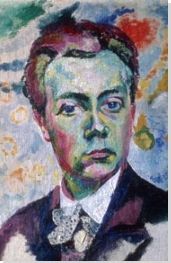
French Painter

Summary of Robert Delaunay
Robert Delaunay's colorful and formally experimental paintings were a unique fusion of early-20 th -century European artistic trends. His best-known works centered on the visually and intellectually stimulating world of Belle Époque Paris in which he and his wife, Sonia Delaunay (Terk) , founded the Orphism movement. The style was distinguished by faceted compositions, vibrant color, and contemporary subject matter that together conveyed delight in the modern life and its technological innovations.
Accomplishments
- Influenced by Neo-Impressionism and the painting technique known as pointillism or divisionism, in his early works Delaunay created forms using squares of color that resembled a mosaic. He often left small areas of canvas blank to create a sense of space and light; even at this stage of development his interest in brilliant color was notable.
- As his style matured, Delaunay further developed his mosaic-like squares into more complex geometric facets in which both solid objects and their surrounding spaces were fragmented, much like Cubism . These canvases are known for their dynamic sense of movement and their celebration of urban life, particularly Paris with Delaunay's oft-repeated motif of the Eiffel Tower.
- Delaunay penned his own theories of color in which he discusses both color as a material form and its great expressive power. He was particularly captivated by how the interaction of various colors generated impressions of movement and depth without allusion to nature. Delaunay wrote that the "breaking up of form by light creates colored planes... [that] are the structure of the picture... nature is no longer a subject for description but a pretext." Eventually, he abandoned "images or reality that come to corrupt the order of color" - thus turning to complete abstraction.
Important Art by Robert Delaunay
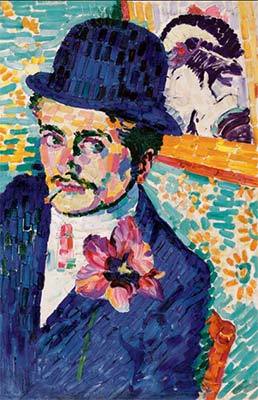
L'Homme à la tulipe (Portrait de Jean Metzinger)
This portrait is one of a series that Delaunay and Metzinger painted of each other during the summer of 1906, many of which have been lost. Delaunay's painting captures both the debonair air of Metzinger and their spirit of collaborative experimentation. This painting shows the influence of Neo-Impressionism and Divisionism on Delaunay's color as well as the influence of artists such as Edgar Degas and Édouard Manet in its unusual perspective. Like Seurat, Delaunay placed complementary and opposite colors adjacent to each other on the canvas rather than mixing paints on the canvas - creating the effect of a hue and the illusion of depth, while giving the works a sense of static classicism. Delaunay was not a slavish follower of Divisionism, however, since his brushstrokes are freer and less precise, and the color is not dictated by nature but is non-naturalistic, indicating Fauvist influences.
Oil on canvas
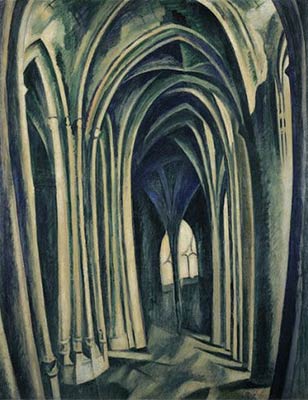
Saint Severin no 3
Saint Severin was the first major series of paintings created by Delaunay in 1909. Focusing on the Gothic ambulatory of this well-known Parisian church, he depicted the view multiple times from the same perspective - looking northeast to capture the effects of changing light as Monet had achieved with his analysis of the exterior of Rouen cathedral. Restricting himself to the subdued palettes the early Cubist works of Picasso and Braque, Delaunay also looked to these artists' use of fragmented planes and distorted form to structure his space. The result is a modern rendering of a Medieval church through a series of repeated arches framed by the cropped composition. Delaunay's technique involved studying the 'reactions of the retina while looking at the sun' - documenting the colors and contrasts created, as well as the distortions in architecture through modulations of light.
Oil on canvas - The Solomon R. Guggenheim Museum, New York, New York
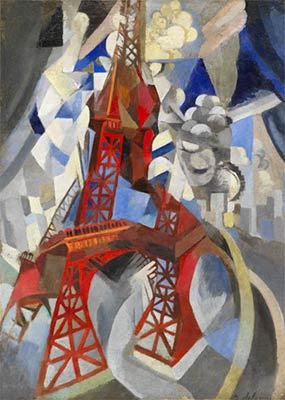
Red Eiffel Tower (La tour rouge)
Delaunay painted his first Eiffel Tower in 1909 to celebrate his engagement to Sonia Terk. He went on to produce around fifteen versions and the tower became a major motif for artists in recognition of the major role that technological development and innovation had on the first part of the 20 th century. The Cubist influence is present in both the fragmented panes of the composition and in the multiple viewpoints of the tower - by looking both up at it's towering height and down on to the smaller buildings. The rich red color is heightened in contrast to the pale blue background, which again emphasises the tower's dominance on the Parisian skyline. His work was described as a synthesis of Impressionism and Cubism but the dynamic robotic-like presence, wing-like forms and plumes of smoke or clouds are more reminiscent of the Futurist project. As Mark Rosenthal noted , 'Delaunay 'effectively replaced the pastoral landscape of the Impressionists with a modern paen of French glory" even reducing his color palette to the red, white, and blue of the French flag.
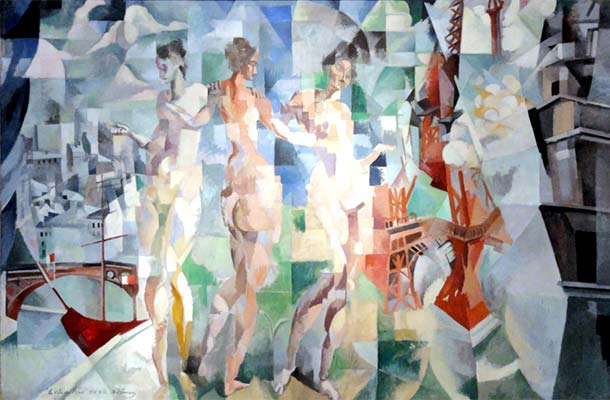
La Ville de Paris
This painting figured prominently in the art world of pre-World War I Paris and was one of the first acquisitions of Jean Cassou, a freelance journalist and later the director of the Museum of Modern Art during the turbulent days of the Socialist Blum government prior to World War II. First shown in the Salon des Independants in 1912, the work caused a sensation and was noted by Apollinaire to be an example of the new movement, Orphism. In 1913, the painting, along with other, smaller compositions, was sent to New York for the now infamous Armory Show. Sadly the work was never shown due to its great scale, causing indignation for the Delaunays and their close circle of friends. As is characteristic of his early work, Delaunay mixes codes and symbols of the city he lived in. Here though, he moves beyond the literal to the allegorical - presenting Paris through a montage of three nude women. The first presents Paris as the historical city, with a view of the Quai du Louvre in the background. The second depicts the classical Paris that is represented by a reference to the Judgment of Paris. The third and final panel is recognizable from Delaunay's previous Eiffel Tower series as the modern metropolis. This painting shows Delaunay's innovative grasp on time and space - themes he would explore further as he moved towards abstraction.
Oil on canvas - Musée National d'Art Moderne, Centre Georges Pompidou, Paris
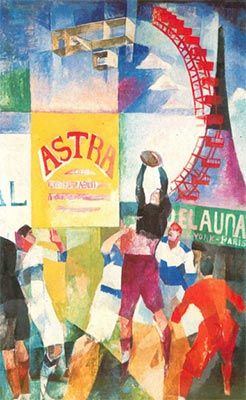
L'Équipe de Cardiff (The Cardiff Team)
For this work, Delaunay drew inspiration from a newspaper image of the Paris-Cardiff rugby match that took place in 1912. He produced several versions of the painting - combining representational elements with a fragmented, Cubist composition that shows the emergence of contrasting color planes and geometric forms of his later work. The motifs he employs all work to illustrate the visual landscape of pre-war Paris- branded hoardings, the Big Wheel, and the Eiffel Tower rising up majestically in the background. Off to one side, partially concealed and disguised as an advertising slogan, is Delaunay's name. The inclusion of visual and written symbols in the painting point to significant themes that were to preoccupy the artist throughout his career- the depiction of movement, technology, sport, and placing himself as a central figure within this dynamic new world.
Oil on canvas - Musée d'Art Moderne de la Ville de Paris, Paris
![robert delaunay tour eiffel rouge Simultaneous Windows (2nd Motif, 1st Part) (Les fenêtres simultanées [2e motif, 1re partie]) (1912)](https://www.theartstory.org/images20/works/delaunay_robert_6.jpg?1)
Simultaneous Windows (2nd Motif, 1st Part) (Les fenêtres simultanées [2e motif, 1re partie])
The Simultaneous Windows series are Delaunay's last semi figurative works before he began experimenting with complete non-objectivity. Here we are looking through a window - the outline of the Eiffel Tower reveals itself beneath fragmented color panes, creating an illusion of depth along with the kaleidoscopic effect that was characteristic of Orphism. The palette is bright and the fluid blocks of color give the illusion of softness and movement. In 1911, Sonia had created a patchwork blanket for their son that famously inspired these works. The Windows series is characterized by a forward thinking and Futurist aesthetic but Delaunay also drew on earlier movements, the motif of looking through windows could be seen in works of the Impressionists and Fauvists and could also have been inspired by the Symbolist concept of a window onto the soul.
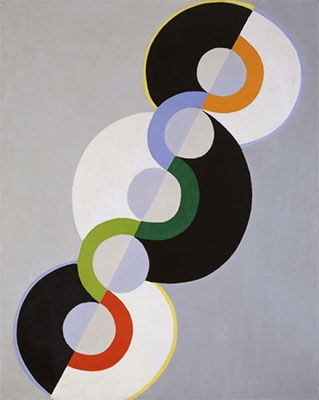
Endless Rhythm (Rythme sans fin)
Endless Rhythm was named by Sonia Delaunay as a way to describe the cyclical looping effect of the circular forms that seem to mimic the flow of electric currents. By 1930 Delaunay had returned to abstraction, producing the large spinning disc compositions for which he is perhaps best known. Building on his earlier experiments, Delaunay achieved the illusion of movement through juxtaposition of colors with geometric form. Delaunay carefully selected his colors to present subtle gradients and then contrasts these with the thick black and pale blue background. The diagonal composition enhances the effect of dynamism. A year after this painting was produced, the discs were brought to life on a monumental scale in his public murals for the Paris exposition.
Oil paint on canvas - Collection of the Tate, United Kingdom
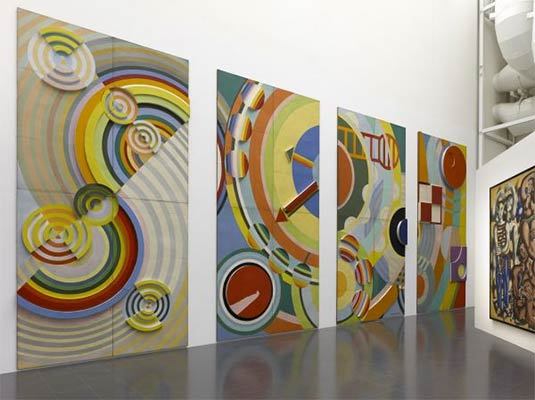
Entrée du Hall des réseaux du palais des Chemins de fer
In 1937 the Delaunays began a new and very different project that would occupy them for almost an entire year when they were commissioned to create a series of murals for the Railway Pavilion and the Air and Aeronautics Pavilion at the Paris Exposition in collaboration with a team of painters. The theme that year was art and technology in modern life. In response,Delaunay chose to recreate the results of his earlier experimentation with simultaneity and chromatic color - this time on an unprecedented scale. Each panel took a different form; inspired by his earlier work in sand, stone, and sculpture. Delaunay imagined repetitive forms, conflicting shapes and endless color palettes to set the room in motion, in homage to new visions of the world afforded by technological innovations. The murals were hung in the entrance to the Musée d'Art Moderne in 1977 in honor of Delaunay's earlier contributions to abstract art.
Centre Pompidou, Musée national d'art moderne, Paris
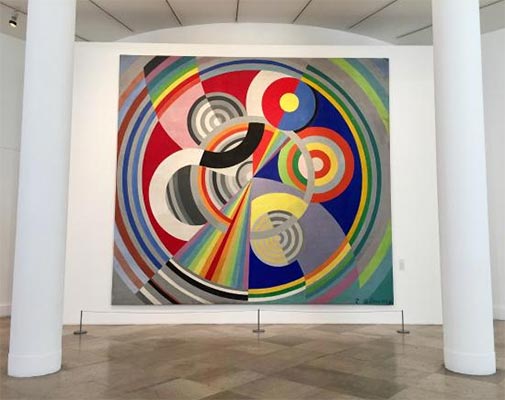
Propelled on by the success of the Exposition commission, a year later Delaunay produced another major commission, this time for the Salon de Tuileries. Again reminiscent of aeroplane propellers, and the swirls and plumes that surround them in motion, this painting evokes the artist's love of speed and technology, as well as his renewed commitment to pure abstraction. It also illustrates his application of color theory. By using the large scale he had become comfortable with, Delaunay heightened the visual sensation of the work by creating simultaneous form and depth rather than descriptive reality. This was to be Delaunay's last major piece before the couple fled Paris for the south of France, where Robert died a premature death just three years later.
Oil on canvas - Centre Pompidou, Musée national d'art moderne, Paris
Biography of Robert Delaunay
Robert Delaunay was born in 1885 to eccentric upper class parents, George Delaunay and Berthe Félicie de Rose. His mother, an irresponsible character fond of society life, called herself 'Countess' though the authenticity of her claims to French aristocracy are in question. His early life in Paris was privileged yet strained - his parents divorced when Delaunay was just four years old and he barely saw his father after this. Taken in by his aunt and uncle, he was raised in a grand estate in La Ronchère near Bourges, by coincidence mirroring the childhood experience of his future wife, Sonia, also brought up by a wealthy uncle and aunt in St Petersburg.
Early Training
The young Delaunay was a lackluster student, spending classes painting with watercolors behind his desk lid. He lacked formal artistic training, but was sent by his uncle to Ronsin's Atelier, to apprentice in theatre design at Belleville. Here he learned to create large scale theatre sets, which would inform his later stage and mural work.
In 1903 Delaunay traveled to Brittany, where he became acquainted with Henri Rousseau and turned to painting, inspired initially by the work of the Pont Aven Group who had painted there from 1886-88. On returning to Paris, Delaunay met artist, Jean Metzinger . The two became close friends and produced a series of small mosaic-like compositions inspired by the Divisionist techniques of Georges Seurat . Their experiments were noted in an article by the critic Louis Vauxcelles in 1907.
In 1909 Delaunay chanced upon a passionate young artist named Sonia Terk, who went on to become his wife and collaborator for the next 30 years, forming one of the most remarkable creative partnerships in art history. A wealthy Russian emigre who had recently come to Paris to train at the Academy de la Palais, Terk was already married to the homosexual German art critic and gallery owner, Wilhelm Uhde in a marriage of convenience. She and Robert began a passionate affair and when she became pregnant, Uhde willingly consented to a divorce. She married Delaunay the following year and quickly realized that the impetuous and childlike Delaunay would not be a conventional husband or father: for the majority of their married life, she would be the main breadwinner for their family. The newlyweds rented an apartment on the Rue des Grandes Augustins, the same street where Pablo Picasso lived, and embraced the exciting new world around them. They painted together, drawing inspiration from the vivid colors and patterns they saw in the electric lights on the Boulevard St Michel, where they strolled in the evenings.'We breathed painting like others lived in alcohol or crime,' Sonia was to later write in her diary.
Mature Period
Pre World War I Paris was at the epicenter of the avant-garde movement. Delaunay immersed himself in the world of aesthetic discovery, innovation, and experimentation that was exploding around him. He exhibited alongside many of the key players in Paris at the Salon D'Automne (1903,1906) and at the Salon des Independants from 1904 -14, developing an increasing fascination with color as a subject in itself. He sought to interpret the modern city through color and rhythm. In 1911, Sonia gave birth to their only son, Charles, and a year later, at age 27, Delaunay had his first solo show at the Galerie Barbazanger in Paris. His work was admired by German Expressionists Wassily Kandinsky , August Macke and Franz Marc . In 1912, he was invited by Kandinsky to exhibit at the first Blaue Reiter exhibition in Germany, as well as to contribute to Der Sturm , the prestigious almanac produced by the group.
Delaunay believed in gestural, grandiose painting and would have frenzied periods of productivity, working from dawn till dusk, sometimes not bathing for days. In between these bouts, he would not touch a brush, instead taking long walks and taking care of his plants. His Eiffel tower series painted during this time gained considerable attention from the art world, leading to inclusions in major exhibitions and group shows in Europe, notably in the Cubist Room at the Salon des Independents with Metzinger. Following this show, his work became increasingly non-objective leading to the emergence of motifs that Delaunay is known for today such as spinning circles and the geometric forms of his windows. In response to his work, critic Andre Warnod wrote of a 'blossoming new school' that broke with the art of Cubism. The same year his close friend and poet, Guillaume Apollinaire , coined the term 'Orphism' to describe Delaunay's paintings, as well as those of Sonia and artist, Frantisek Kupka. The name, derived from the Greek mythological lyre-playing Orpheus likened the painters' energy to a primal urge for creation. Apollinaire also wrote that Picasso occupied one camp and Delaunay the other - with Kandinsky and Duchamp as his followers. This over embellishment of his achievements caused a stir. In fact, Delaunay preferred to call his work 'simultaneous' rather than 'orphic', as he felt this evoked the spirit of the new age, but this too caused controversy for Delaunay as the Italian Futurists claimed this concept as their own.
Though Delaunay had gained support for his work, his attention-seeking, outspoken personality was exhausting and Sonia often had to mediate when he antagonized others with egocentric claims such as 'before me color was only coloring'. Gertrude Stein captured his personality succinctly when she wrote: 'he sees himself as a grand solitary figure when in reality he's an endless chatterbox who will tell anyone about himself and his significance any time of day or night'. During this period, Delaunay's short temper alienated both students and colleagues.
On Sundays the Delaunay's opened up their home to artists, poets, musicians, and writers that included Henri Rousseau, Metzinger, Guillaume Apollinaire, Fernand Léger , Albert Gleizes, Henri Le Facconnier, and Blaise Cendrars. On Thursdays the group would dance at the Bal Bullier in Montparnasse, turning up late to make an entrance wearing the outlandish simultaneous designs created by Sonia. The Delaunays were always center stage with Sonia in elaborate multi colored dresses and Robert in matching suits of scarlet, green, and other garish colors. The group would also wear multi colored socks so they could dance the tango with no shoes. Their outfits were described as 'Futuristic' by Giacomo Balla and attracted international media attention; Sonia's designs were described by Apollinaire as turning 'fantasy into elegance'. Like the Futurists, Robert was obsessed with the new era of technology and speed, and would frequently visit the St Cloud airship outside Paris. From here came the inspired work 'Homage to Bleriot' in 1914- an 'allegory of the new age' as well as an illustration of his theory that color could become form and subject.
The Delaunays were on vacation when World War I broke out in August 1914, but unlike the others in their circle they stayed as far from the fighting as possible, firstly in Portugal then in neutral Northern Spain. Robert did finally enlist in 1916, but was declared unfit for service due to a large heart and collapsed lung. In 1917, Sonia's income was cut off at the outbreak of the Russian Revolution and she turned to fashion design to provide for her family, setting up her own boutique, Casa Sonia. This proved a lucrative period for both artists when Robert met the Russian exile, Sergei Diaghilev and the rest of the Ballet Russes, which had been somewhat depleted by war. Robert was commissioned to design and make the stage set for their next performance while Sonia created the costumes.
In 1920 the Delaunays returned to Paris, where Sonia established herself as a successful fashion designer, so Robert could pursue his art. They rented a grand apartment and resumed their Sunday salons - pulling in a new group of young artists including Tristan Tzara , Francis Picabia , André Breton , Jean Cocteau , and Jean and Sophie Arp . The apartment became a living, breathing simultaneous artwork as their Dada and Surrealist friends adorned the walls with paintings, poems, and signatures. However, as always they were living beyond their means and bailiffs were frequent visitors to the apartment; in 1922 money was so tight that Sonia had to sell their Henri Rousseau painting The Snake Charmer to the Louvre for 50,000 francs. With this Robert bought their first car, and in doing so found the one pastime that would relax him - driving. The Delaunays were known for their progressiveness- owning a car, telephone, and radio before any of their friends as well as being the first to re-establish links with German artists after World War I. However, artistically Robert was lagging behind his entrepreneurial wife - he had not exhibited since 1913 except for a solo show in 1922 that had little success despite the loyal attendance of his new Surrealist friends.
Late Years and Death
By the mid 1930s, Robert's reputation had dwindled and he was in a cycle of producing unfinished works that lacked conviction. He spent time conducting his, what seemed to be fruitless, research into developing new pigments and using stone and sand to make lacquer. During the late 1920s he had turned to figurative work, then back to complete abstraction. A low point was the creation of a nude for the lounge of the embassy room at the Exposition Universale of 1925, which was deemed inappropriate and taken down. The same year they both turned 40 and Sonia - now a very successful designer who ran 30 boutiques, began to pine for the painting of her earlier career. Robert encouraged this return to intellectual curiosity saying, ' to produce is great, but we must also promote our ideas'. With the crash of Wall Street in 1929, fashion couture declined as it became 'bad taste to look rich'. Sonia made the decision to close her boutique and the couple gave up their apartment, declaring 'We'll paint and we'll live like before'.
Money was tight and both artists were encouraged to register for unemployment by friends, but Robert's pride prevented this. The couple joined the Abstraction Creation group in 1932 and four years later were invited to take part in the Exposition Internationale des Arts et Techniques dans la Vie Moderne of 1937, with an emphasis on public art. Robert took charge of the project, working with fifty unemployed artists in a large garage to produce huge murals for the aeronautical pavilion, with the theme of the romance of railway travel. During this period they 'lived like monks' according to Sonia, with Robert showing a renewed energy and commitment to the project. His previous experiments with stone proved to be invaluable as he developed ways to produce murals that were resilient to the elements. The show was a success, and Robert's pavilion received very positive reviews by those who saw it. However, it was overshadowed by the overwhelming success of Picasso's Guernica in the same show - adding fuel to the longstanding envy he had for the Spanish artist.
The International Exposition brought the Delaunays back in demand and a year later, Robert produced what would be his last series- decorations for the Sculpture Hall at Salon des Tuileries. With these successes behind them, the couple made exciting plans to travel to New York, but timing was against them and with World War II looming they fled to the South of France to avoid the Nazi invasion. The move was detrimental to Robert's deteriorating health and he died from cancer in 1941 in Montpellier, France. Sonia went on to live for another thirty years, and with their son, Charles, managed Robert's estate, and paid tribute to Robert's memory through her work.
The Legacy of Robert Delaunay
Robert Delaunay's reputation fluctuated throughout his life and after his death, so it is a challenge to map his legacy in modern art history. However, it is without a doubt in the heady pre-World War I days that his influence on other artists and writers was most pronounced. His text 'Note on the Construction of Reality in Pure Painting' (1912) was seen by many critics as fundamental in the evolution of abstract art theory; in one article Apollinaire even credits Delaunay with influencing Picasso's use of light. Whether or not this was entirely accurate, it is certain that during 1912-13 Delaunay was seen by many as occupying a contradictory and equivocal position in relation to Cubism, something which inspired young artists looking for new directions. One such example was the young American, Morgan Russell, who saw the vibrant color harmonies of Delaunay's canvases in 1912. Soon afterwards, Russell founded the Synchronist movement with Stanton McDonald Wright, which expanded on the color theory of Michel Chevreul and Ogden Rood, as Delaunay himself had done. Later however, Russell and Wright denied all connections with Orphism.
Similarly contentious was Delaunay's relationship to Futurism . His incorporation of modern architecture into a fragmented, dynamic pictorial space suggests a role in the development of Futurist visual language, particularly evident in Umberto Boccioni 's Simultaneous Visions (1912). The Italian artist had in fact visited Paris in 1911 and would have seen Delaunay's Saint Severin and Eiffel Tower series. At the time both movements rejected any comparison but after the artist's death, Fernand Leger was to declare 'It was with Robert Delaunay on our side that we joined the battle' [towards abstraction] (1949).
After Delaunay exhibited his work at the first Der Blaue Reiter exhibition, he caused a stir : the blocks of vivid color Klee went on to employ in his Tunisian watercolors (1914) are reminiscent of Delaunay's Windows series, and critic, Theodore Daubler, actually referred to him as the 'first known Expressionist' in 1916. Other commentators point to links with Die Brucke . For Mark Rosenthal, the distorted expressionist forms in Delaunay's Saint Severin can be clearly seen in the art of Lyonel Feininger, Ernst Kirchner's street scenes, and in the film sets for Robert Weine's Cabinet of Dr Caligari (1920).
Delaunay's close connections with Kandinsky, Hans Hoffman, and Diego Rivera during his lifetime also suggest a possible link with Abstract Expressionism, as these were all prominent figures in the development of the New York School in the 1940s. Delaunay's innovative use of encaustic wax (developed when he had no access to art materials in Spain), large scale architectural painting ( The City of Paris , the 1930s murals) and color as a vehicle for expression can be indirectly linked to the work of Jackson Pollock , Barnett Newman , and Mark Rothko .
By 1945, just four years after his death, Delaunay's name was virtually unknown. His wife, Sonia, was by then well-established in her design career and she worked tirelessly to restore her late husband's reputation as a pioneer of abstract art. She persuaded galleries to show his work and in 1963 donated 114 of his works to the Musée d'Art Moderne in Paris, helping to place his name back in the public consciousness. However, it is in her vast body of work where his most direct legacy lies. She kept their shared theories of simultaneity alive through her prolific production of clothing, household objects, book binding, fabrics, and painting, all characterized by colorful abstract forms that were reminiscent of Robert's earlier Orphic works.
Influences and Connections

Useful Resources on Robert Delaunay
- 1906-1914 De L'Impressionisme a L'Abstraction By Pascal Rousseau, Jean-Paul Ameline
- The New Art of Color (The Documents of 20 th -century art) Our Pick By Robert Delaunay, Sophie Delaunay, and Arthur A. Cohon
- Robert Delaunay: Light and Color By Gustav Vriesen, Max Imdhal, and Maria Pelikan
- Robert and Sonia Delaunay: The Triumph of Color By Hajo Duchting, Robert Delaunay, and Sonia Delaunay
- Resisting Abstraction: Robert Delaunay and Vision in the Face of Modernism Our Pick By Gordon Hughes
- Online collection
- Envisioning Abstraction: The Simultaneity of Robert Delaunay's First Disk Our Pick By Gordon Hughes / The Art Bulletin / 2007
- Sonia Delaunay Our Pick By David Seidner / BOMB Magazine / July, 1981
- Robert Delaunay, "Simultaneous Contrasts: Sun and Moon" The Khan Academy
- Archive Grid Papers relating to Sonia and Robert Delaunay, c. 1960-81
Similar Art
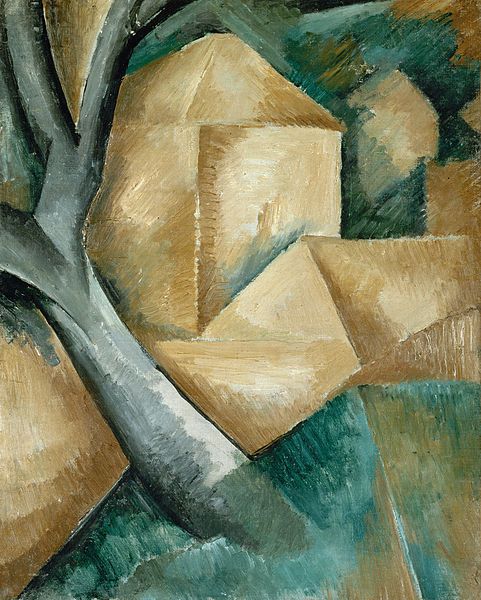
Houses of l'Estaque (1908)
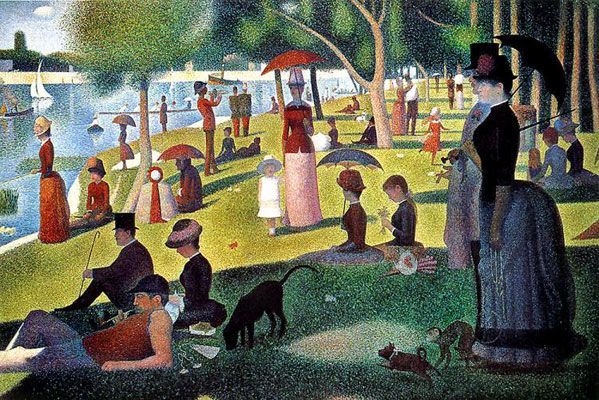
Sunday Afternoon on the Island of La Grande Jatte (1884-86)
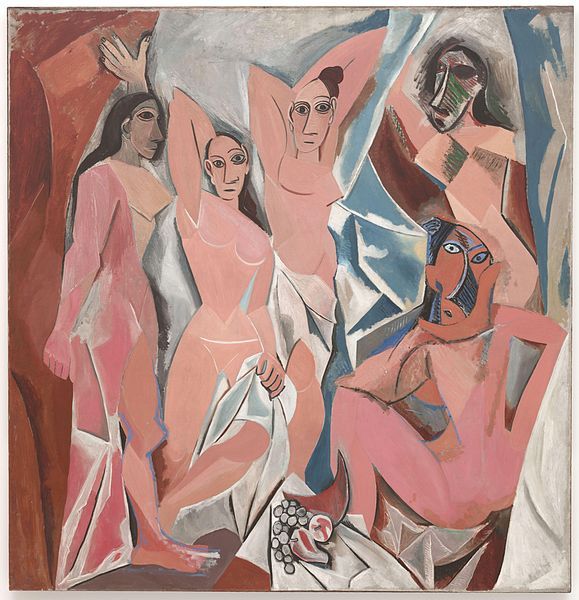
Les Demoiselles d'Avignon (1907)
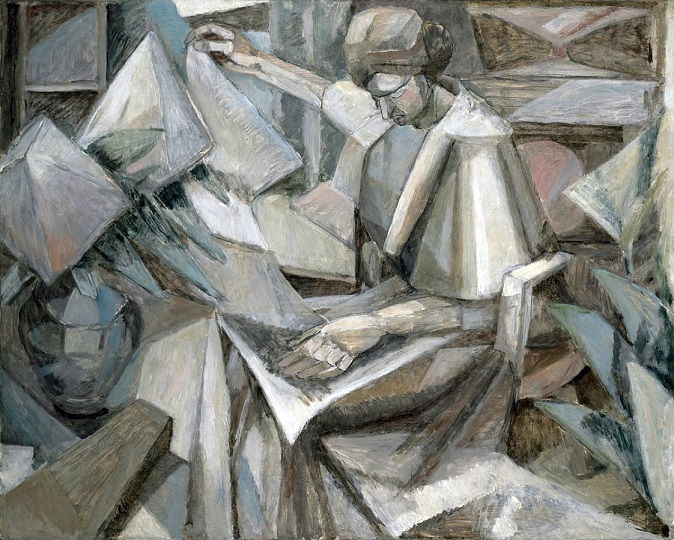
Woman with Phlox (1910)
Related artists.

Related Movements & Topics

Content compiled and written by Sarah Jenkins
Edited and published by The Art Story Contributors

Eiffel Tower
- Robert Delaunay
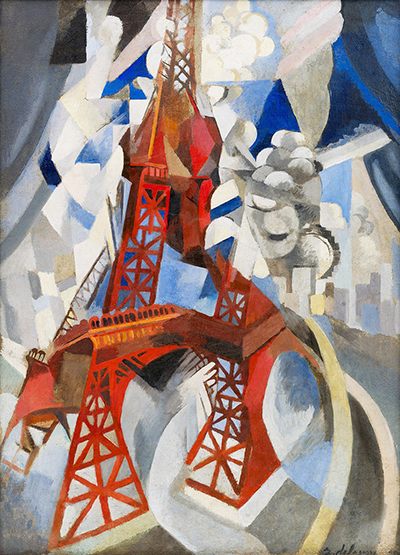
* As an Amazon Associate, and partner with Google Adsense and Ezoic, I earn from qualifying purchases.
For all that he achieved across his career, Robert Delaunay remains most famous for his series of depictions of the Eiffel Tower in Paris.
Introduction to the eiffel tower series.
The artist appreciated both the symbolic value of this iconic tower, but also its aesthetic beauty. Soon after painting his first iteration in 1909 he would decide to continue on this theme for the next few years. After 1912 he took a break to spread his interest elsewhere, but then returned to this topic in the 1920s, in which he again re-invented the genre of architectural painting.
His work is famous for its use of the iconic symbol of the Eiffel Tower, with many aware of this series, without necessarily knowing much about the rest of Delaunay's career. His legacy was protected through the work of his wife, Sonia, who continued to impress for a number of years after his death and produced a highly impressive and innovative body of work herself.
Description
Whilst elements of this painting, La Tour Rouge, may not initially be clear, because of the style of the work, we can consult Delaunay's previous iterations on this theme in order to decipher the content. His earlier versions are less abstract, and show two vertical structures on either side of the tower, representing other high rise buildings in Paris.
The artist then fills the background with a blue sky and white fluffy clouds, though this version fragments everything, in a Cubist manner. The tower itself is pictured in red, with its angles rotated and contorted, though still just about recognisable. A version from around the same time, Champs de Mars: The Red Tower, handles the tower in a similar manner but gives a much clearer definition of detail to the surrounding buildings.
The influence of Paul Cezanne is clear in artworks such as this, where angles are played around with, and items that we recognise are presented in an unusual, complex manner. We could essentially view the same thing from different angles, all within the same painting, and this made Cubism a short-lived, but highly influential period in European art.
Evolution as an Artist
Delaunay would slowly move towards a greater and greater use of abstraction in his work. Eventually, his forms would become unidentifiable, reduced to simple arrangements of squares and circles, as his development had finished. After his death, his wife Sonia would continue to work innovatively, adding new ideas to their body of work, and it was clear that Robert himself still had many new avenues to explore were he to have lived a little longer.
Painting Details
The painting pictured at the top of the page is known as La Tour Rouge, or Red Eiffel Tower and dates to 1911-12. It is a part of the Guggenheim Museum, who own a number of Robert Delaunay's paintings . This would be one of the last of his first phase of Eiffel Tower paintings, before returning to the topic in 1922.
La Tour Rouge represents a mid-point in Robert Delaunay's series of Eiffel Tower paintings, as he continues to experiment with different levels of abstraction. Perhaps they are a summary of his career as a whole, as he fuses different contemporary ideas together over time, regularly experimenting with different balances. There is also the specific use of colour, which was a key element to his work.
Article Author

Tom Gurney in an art history expert. He received a BSc (Hons) degree from Salford University, UK, and has also studied famous artists and art movements for over 20 years. Tom has also published a number of books related to art history and continues to contribute to a number of different art websites. You can read more on Tom Gurney here.
Masterpiece Story: The Red Tower by Robert Delaunay
James W Singer 2 April 2024 min Read
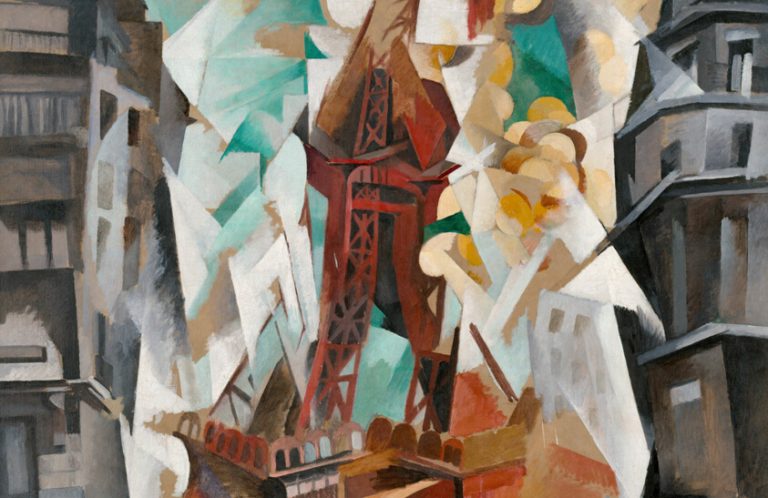
Robert Delaunay, Champs de Mars: The Red Tower , 1911-1923, Art Institute of Chicago, Chicago, IL. Detail.
Recommended
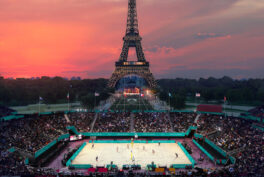
Architecture
Art and Sports: En Route to the Paris 2024 Olympics
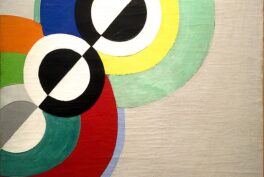
Masterpiece Stories
Masterpiece Story: Rhythms by Robert Delaunay
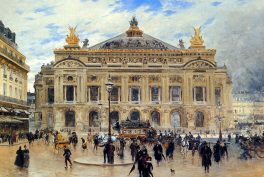
Art Travels
Visit Parisian Landmarks in These 10 Gorgeous Paintings
When people speak of Paris, the Eiffel Tower is probably the first thing that flashes into the imagination. It is the iconic symbol of Paris . Robert Delaunay captures this celebrated structure in his painting, Champs de Mars: The Red Tower . The famous 19th-century building is boldly interpreted through Delaunay’s eyes in a 20th-century Modernist perspective. The Eiffel Tower takes on new meaning but remains the timeless classic we all still love and adore.
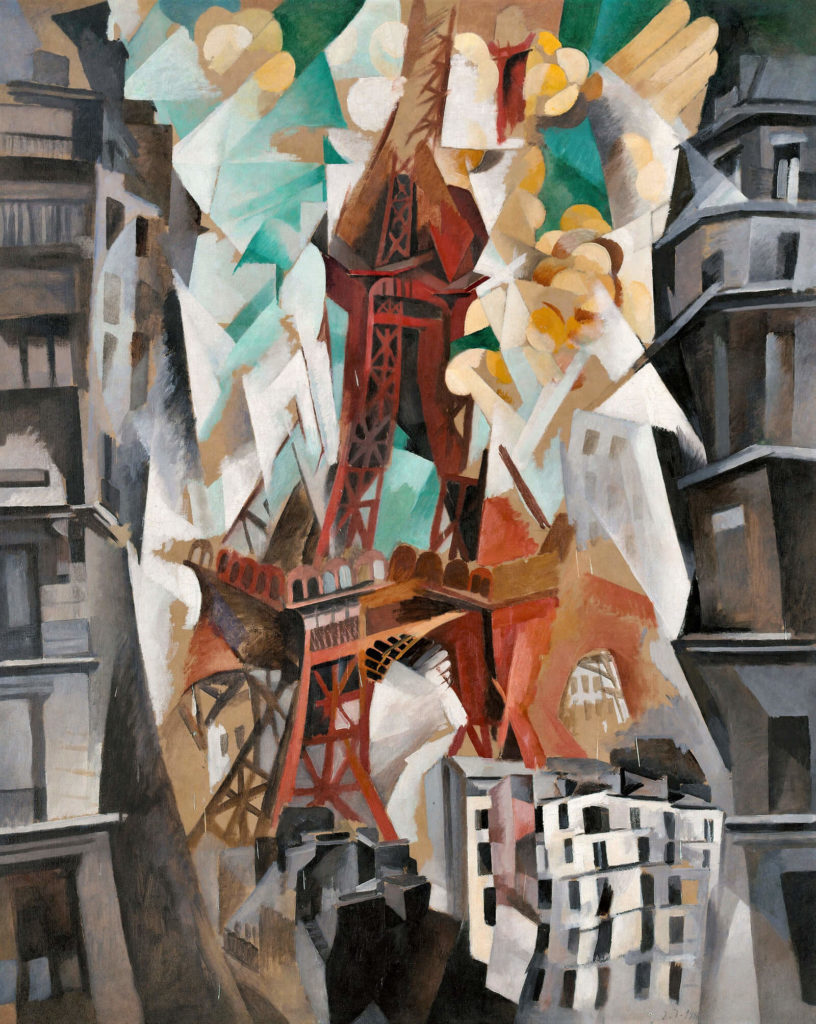
When Robert Delaunay began painting Champs de Mars: The Red Tower in 1911, the Eiffel Tower was only 22 years old. Therefore, it was still considered a new addition to the skyline of Paris. It was completed by the “Magician of Iron”, Gustave Eiffel, in 1889, and was to be revealed to the world at the Exposition Universelle , or World’s Fair. The Eiffel Tower was immediately striking as the world’s tallest structure, a title it held for 41 years until 1930. It is constructed of wrought iron and stands 1063 feet above the city.
It was also a shocking example of the rising prominence of realist, rationalist, and functionalist architecture that was spreading throughout the world. No longer was a building’s form and function hidden behind decorative façades. Now its structural integrity could be boldly displayed as part of its overall appearance. The Eiffel Tower was a massive symbol of the rapidly urbanized and industrialized society of Paris.
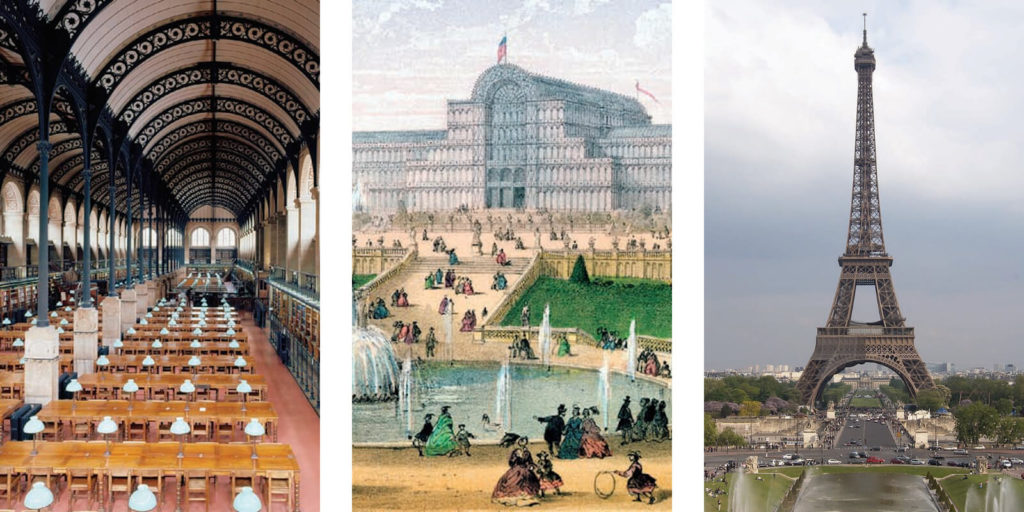
The 19th century was a time of massive changes, especially in Paris. For 30 years, Baron Haussmann was literally destroying and rebuilding history. Architects Henri Labrouste and Joseph Paxton were building skeletal, iron structures such as the Bibliothèque Sainte-Geneviève (1843-50) and the Crystal Palace (1850-51). The Eiffel Tower was the next step in this architectural progression towards Modernism .
Its open-frame body with iron girders was a dramatic departure from the Neoclassical styles of the early 19th century. However, despite its dramatic design and initial rejection by the Parisian “elite”, it quickly became a symbol of 19th-century Paris. It stood for the city’s traditions, beliefs, hopes, and dreams.
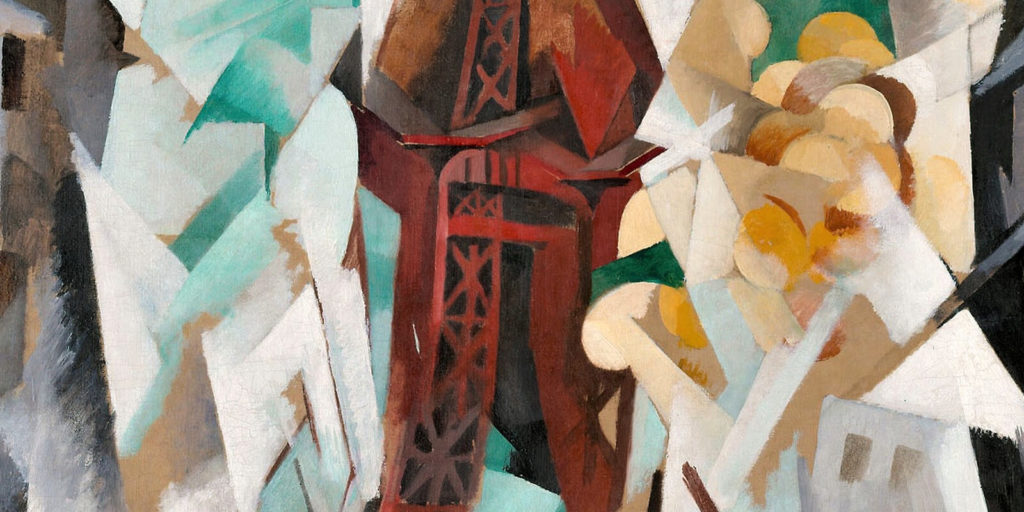
Robert Delaunay’s Champs de Mars: The Red Tower may depict a 19th-century cityscape, but not in the traditional 19th-century style of painting. His painting is thoroughly Modernist and rejects conservative and realistic depictions of the Tower. He does not aim to portray it as the eye sees it, but to depict its essence, character, and form.
It is a painting rejecting linear perspective and realistic shading and is not photographic in any sense. It embraces the dissection of forms, shapes, and colors by holding to most of the tenets of Cubism . This is an art form proudly supported by famous artists like Pablo Picasso and Georges Braque . However, Robert Delaunay is not simply a follower of Cubism. He embraces dramatic colors following the school of Orphism, which consists of fantastically vibrant colors. Cubism, however, tends to follow a more somber color palette of browns and blacks. Orphism holds hands with Cubism but is not married to it.
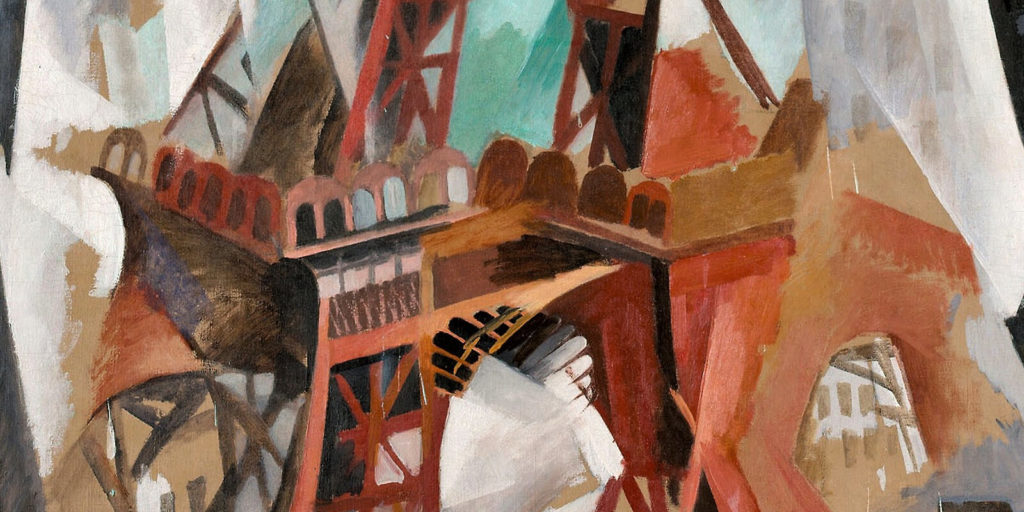
The Eiffel Tower was not always the bronze color it is today. It has been painted 18 times and in many colors including red-brown, yellow-ocher, and chestnut-brown. When Champs de Mars: The Red Tower was painted, the tower was red-brown, which is why the Eiffel Tower dominates the center of the canvas in its bold shades of red and orange. It sharply contrasts the grey and white buildings surrounding its base and flanking its sides. The homogeneous buildings act as a frame for the Tower, and this framing augments its importance in the scene.
The Eiffel Tower is in fragments, a collection of colorful splinters; and like the shards of a broken mirror, the Tower’s pieces still retain some of their original character. We can tell that we are looking at the Eiffel Tower through the scene’s implications and not only through its actual appearance. The Tower’s shards loosely collect into a familiar outline while the brackets and girders of its feet and body are loose and sporadic. Its platforms imply its stories, but they are tilted and unstable. Everything speaks of the actual Eiffel Tower without capturing its photographic appearance.

Robert Delaunay’s Champs de Mars: The Red Tower has a multitude of rhythms and patterns; such as the lines that repeat themselves throughout the scene forming sympathetic and antagonistic patterns. Similar colors are in harmony, while dissimilar colors are in dissonance. It is as though bright strokes break into a wide spectrum-like light that is passing through a glass prism.
The diagonal lines of the Eiffel Tower repeat in the parallel lines of the blue sky, and these lines contrast with the vertical and horizontal lines of the surrounding buildings. The red and orange hues play among themselves creating depth and interest. The Tower’s colors also stand out against the somber and muted shades of the grey and white buildings. The grid of windows and ledges further add to the Tower’s dynamic structure. This, by far, makes the Eiffel Tower the most eye-catching element of the painting since it has so much contrast from its environment.
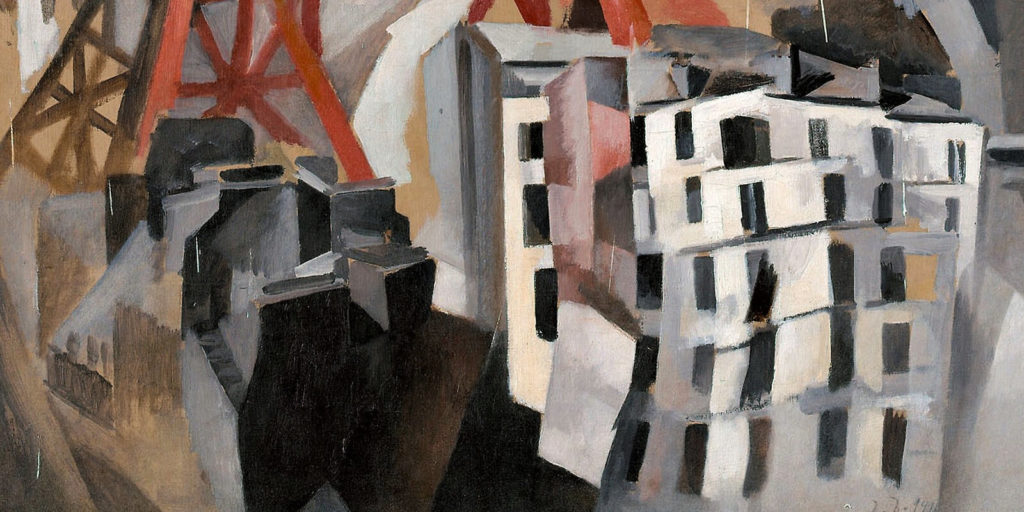
This important artwork also imparts a social timeline. When Champs de Mars: The Red Tower was completed in 1923, France was forever changed; World War I had ravaged humanity and taken countless lives. The be lle époque or “beautiful period”, lasting from 1871 to 1914, was officially over; and a France of optimism, of peace, and of prosperity was killed alongside millions of soldiers during the war .
A sense of innocence and naivety was lost, and a more savage and destructive world was revealed. Shell-shock was real, and it reverberated throughout the paintings of the period. The violent motions of shape and color chosen by Robert Delaunay in this piece reflect the social collapse of the old order. The Tower still stands in the painting, but it is broken and fragmented, just like post-WWI France. Like a favorite vase that is smashed and glued back together, post-WWI society could never be as it was before the war. Despite it appearing whole again, the cracks will always be visible and present.
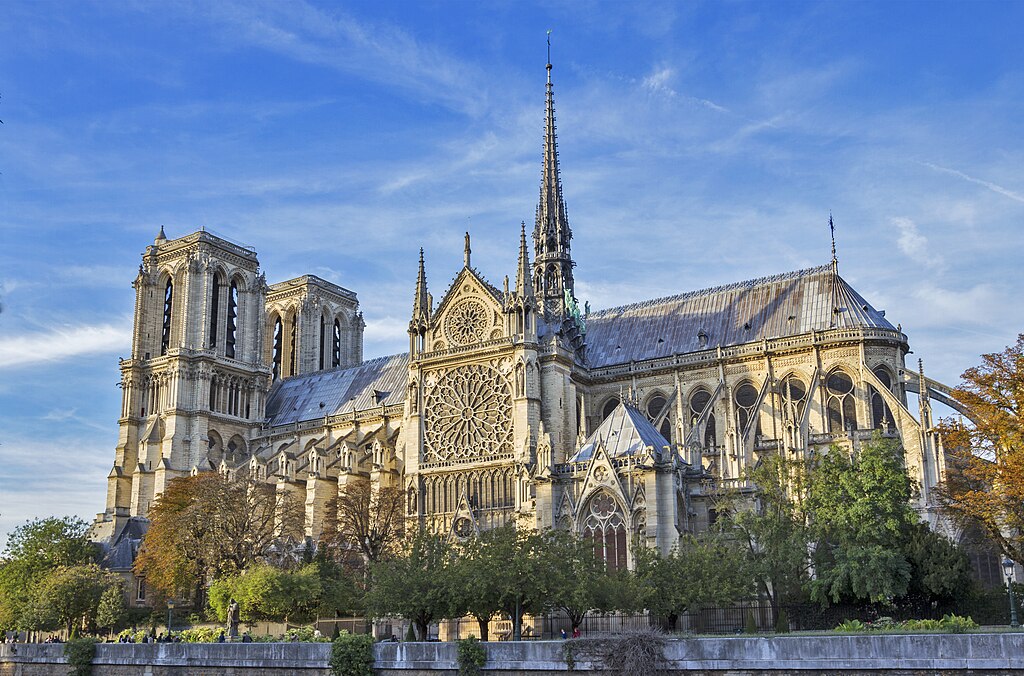
Robert Delaunay painted Champs de Mars: The Red Tower during a period of great social, economic, and political transition. Architecture was rapidly evolving, society quickly changing, and countries swiftly rebelling. French Orphism and Cubism influenced Italian Futurists and German Expressionists . The Eiffel Tower had overtaken Notre-Dame as the symbol of Paris, and the Jazz Age had overtaken the belle époque. Change was the spirit of the age.
Robert Delaunay’s Champs de Mars: The Red Tower is a masterpiece in capturing this spirit. It reflects on the past while it also views the present and hopes for the future. The Art Institute of Chicago is blessed to have such a great work among its collection. And you should view it the next time you are in the Windy City. You will not regret it.
Bibliography
Beckett, Wendy, Patricia Wright, Sister Wendy’s 1000 Masterpieces, London: Dorling Kindersley Limited, 1999.
Champs de Mars: The Red Tower , The Art Institute of Chicago Online Collection. Accessed May 20, 2020.
Charles, Victoria, Joseph Manca, Megan McShane, and Donald Wigal, 1000 Paintings of Genius, New York, NY: Barnes & Noble Books, 2006.
Field, D. M., The World’s Greatest Architecture: Past & Present, New York City, NY: Barnes & Noble Books, 2002.
Gardner, Helen, Fred S. Kleiner, and Christin J. Mamiya, Gardner’s Art Through the Ages, 12th ed. Belmont, CA: Wadsworth, 2005.
Painting the Eiffel Tower , La Tour Eiffel, February 10, 2020.
- 19th Century
- 20th century
- Robert Delaunay
Get your daily dose of art
Click and follow us on Google News to stay updated all the time
We love art history and writing about it. Your support helps us to sustain DailyArt Magazine and keep it running.
DailyArt Magazine needs your support. Every contribution, however big or small, is very valuable for our future. Thanks to it, we will be able to sustain and grow the Magazine. Thank you for your help!
James W Singer
James W. Singer is an art historian and fine art photographer. He earned a Bachelor of Arts in Art History from the University of Florida. He later moved to Paris, France. He currently writes “Masterpiece” articles for DailyArt Magazine.
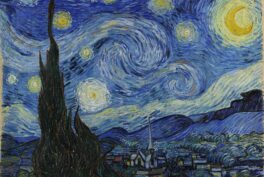
Masterpiece Story: The Starry Night by Vincent van Gogh
During his stay in the Saint-Rémy hospital in southern France, Vincent van Gogh created The Starry Night. It became one of his most recognizable...
Valeria Kumekina 24 March 2024
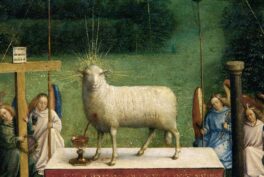
Ghent Altarpiece: The Charmed Life of the Mystic Lamb
Come with us to visit the Van Eyck brothers, their monumental Ghent Altarpiece, and explore 500 years of intrigue, theft and revolutionary painting techniques.
Candy Bedworth 21 March 2024
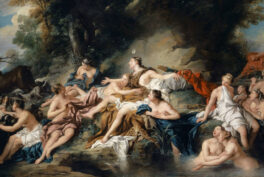
Masterpiece Story: Diana and Actaeon by Jean-François de Troy
Diana and Actaeon by Jean-François de Troy is a French masterpiece blending the exuberance of Rococo sensuality with the intellectualism of...
James W Singer 25 March 2024
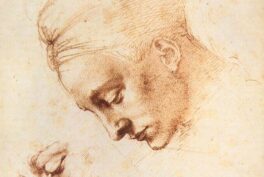
Lost Masterpieces: Leda and the Swan by Michelangelo
Throughout art history, numerous works have been lost, leaving only the stories as a testimony to their greatness. Among these lost treasures is...
Javier Abel Miguel 8 April 2024
Never miss DailyArt Magazine's stories. Sign up and get your dose of art history delivered straight to your inbox!
Robert Delaunay
La Tour Eiffel

Robert Delaunay (1885, France - 1941, France)
Emblème de la modernité, la tour métallique construite par Gustave Eiffel en 1889 fascine Delaunay et traverse tout son œuvre. Après l'avoir désarticulée dans une importante série cubiste au début des années 1910, l'artiste magnifie la tour Eiffel dans une gamme de couleurs flamboyantes soulignée par un puissant effet de contre-plongée, souvent adopté par les photographes de l'époque.L'armature ajourée de l'édifice s'élance comme un pont vers le ciel. Les couleurs des aplats géométriques dont la tour est revêtue confèrent à cette peinture une allure décorative affirmée.
- Paris (ville)
- Tour Eiffel (Paris) (représentée)
- forme géométrique
Crédit photographique : Centre Pompidou, MNAM-CCI/Hélène Mauri/Dist. RMN-GP /Dist. RMN-GP
Réf. image : 4Y03736
Diffusion image : l'Agence Photo de la RMN

Informations détaillées
De la/du même artiste.
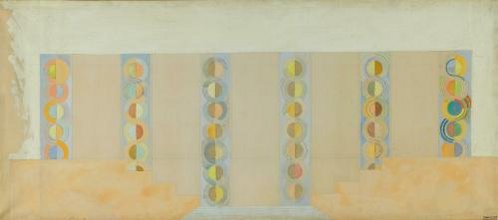
Esquisse pour la décoration de l'escalier du Palais des Chemins de fer…
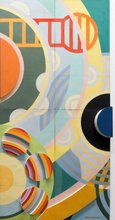
Entrée du Hall des réseaux
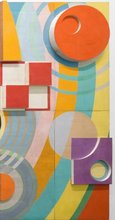
Le poète Philippe Soupault
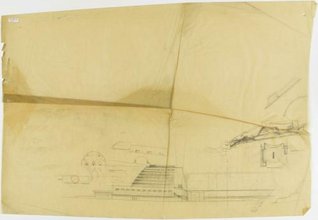
Félix Aublet, Robert Delaunay
Élévation et croquis
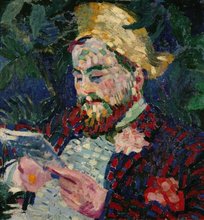
Portrait d'Henri Carlier
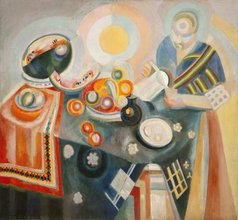
La Verseuse
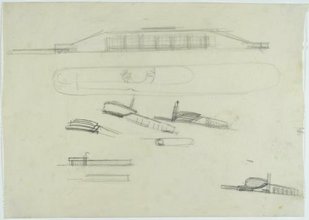
1936 - 1937
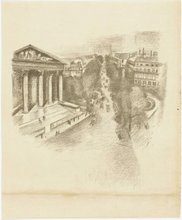
La Madeleine et les Boulevards
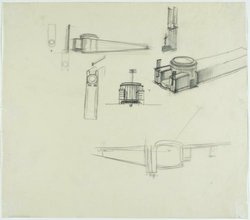
Croquis de femme en robe longue
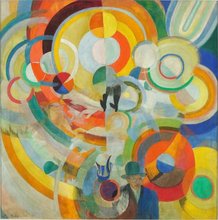
Manège de cochons
Art et architecture en Europe 1870-…
Images et imaginaires de l'architecture
La Donation Sonia et Charles Delaunay
à l'Atelier Brancusi

Bibliographie
Liens externes.
La collection du Musée national d’art moderne

Robert Delaunay – The Painter Who Put Color Into Cubism
Robert Delaunay was one of the most unique artists of the early 20th century in Europe. Delaunay and his wife were the founders of Orphism. His colorful works were based on formalistic experimentation and, as a result, became both visually and intellectually stimulating. His vibrant colors and geometric shapes are a testament to his passion for experimentation with the tone and depth of color. Through his unique style, Delaunay played a pivotal part in the development of abstract art.
Table of Contents
- 1.1 The Early Years
- 1.2 Sonia and Orphism
- 1.3 Mature Period
- 1.4 The Late Years
- 2.1 Saint-Séverin No. 3 (1909-1910)
- 2.2 Red Eiffel Tower (La tour rouge) (1911 – 1912)
- 2.3 The Three Windows, the Tower and the Wheel (1912)
- 2.4 Simultaneous Contrasts: Sun and Moon (1913, date on painting 1912)
- 3.1 Robert and Sonia Delaunay: The Triumph of Color (1994) by Hajo Düchting
- 3.2 Resisting Abstraction: Robert Delaunay and Vision in the Face of Modernism (2014) by Gordon Hughes
- 4.1 Who Inspired Robert Delaunay?
- 4.2 What Was Robert Delaunay’s Final Work?
- 4.3 How Do You Pronounce Delaunay?
Artist in Context: Robert Delaunay’s Biography
Robert Delaunay’s biography boasts that he was one of the first painters whose work was completely non-representational. He was one of the leading artists working in the early 20 th century in Europe. His paintings are a unique stylistic fusion of the artistic trends of the time, including Cubism , Neo-Impressionism, and Fauvism.
In his early career, he was influenced by the use of color by the neo-Impressionist painters, and soon after, in 1910, he made his first big contribution to Cubism, with works such as his dynamic Red Eiffel Tower (1911-1912). This was the start of his works developing a more poetic and mystical style. His later work, made during his “Orphic” period, directly influenced the famous group of Expressionist painters , called Der Blaue Reiter.
By 1912, Delaunay’s work had become completely non-representational, and he continued to paint non-objective works, inspired by color theory , that would become known as “Orphism”.
The Early Years
Robert-Victor-Félix Delaunay was born in 1885 to an upper-class family in Paris. This financial stability did not, however, shield him from a difficult early life and his parents, George Delaunay and Countess Berthe Félicie de Rose, got divorced when he was four years old. After the divorce, he moved to a town near Bourges, where he was raised by his aunt and uncle. After failing his final exam in school, he told his uncle that he wanted to be a painter. At his request, Delaunay’s uncle sent him to Paris to be an apprentice at a theater studio called Ronsin’s Atelier. Here, he learned to paint large theater sets.

When Delaunay turned 19, he decided to leave Ronsin’s atelier so that he could focus exclusively on painting. Delaunay started painting in 1903, and his first works were exhibited in 1904. Robert Delaunay, the artist, traveled to Brittany where he met Henri Rousseau , a post-Impressionist painter who was an early influence on his work. When he returned to Paris, he experimented with paintings inspired by the Pointillism style of Georges Seurat . During this time, he became friends with artist Jean Metzinger and together they studied the color theories of Michel-Eugène Chevreu.
Their works were colorful and mosaic-like and they often painted each other’s portraits.
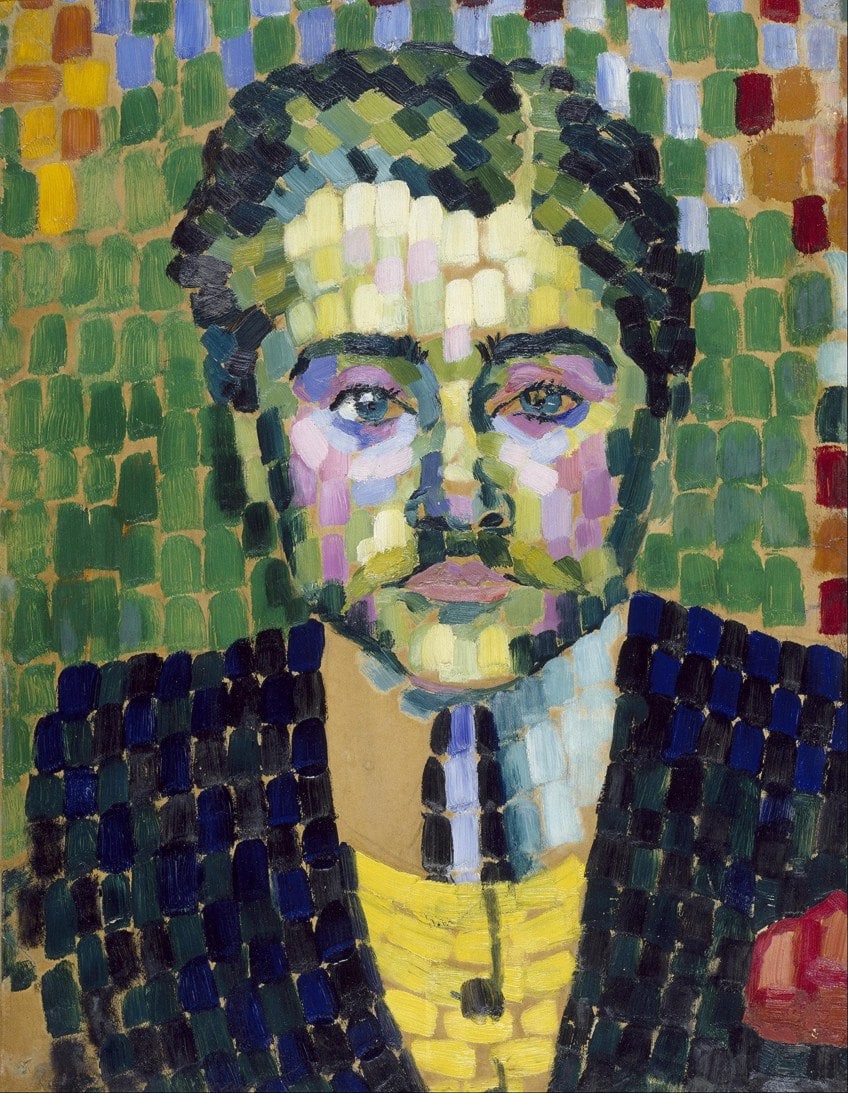
Sonia and Orphism
In 1909, Robert Delaunay met artist Sonia Terk. Delaunay was attracted to Sonia, but she was married to Wilhelm Uhde, who was an art dealer and the owner of a gallery called “rue Notre-Dame-des Champs”. Sonia Terk called her marriage to Wilhelm Uhde a “marriage of convenience” to mask Uhde’s homosexuality, and she and Delaunay had a passionate love affair despite her marital status. When Sonia Terk became pregnant, she and Uhde got divorced. She married Delaunay in 1910 and they collaborated in work for over 30 years.
Robert and Sonia Delaunay’s creative collaboration is one of the most remarkable in history. Together, they founded and led the movement of Orphic Cubism , or Orphism for short.

Orphism developed out of Cubism and is influenced by the flat planes of Fauvism and the color experimentation of Impressionism . The works they created were brightly colored and had elements of the geometric deconstruction of cubism. These works were some of the first purely abstract works in Europe. It was in this period where poet Guillaume Apollinaire coined the work of the Delaunays as “Orphism”. This name was derived from Orpheus, the Greek mythological musician.
Mature Period
Before the First World War, Paris was the epicenter of avant-garde art . Delaunay was fascinated with the rate at which innovation and experimentation took place all around him. He was exhibiting well in Paris and from 1904 until 1914, he was showing work at the “Salon des Independants”, whose annual exhibitions set trends for artists in Europe.
His colorful and dynamic works aimed to capture the rhythm and movement of the modern city of Paris.

At the age of 27, a year after the birth of his only son, Delaunay had his first solo show. The exhibition was at the Galerie Barbazanger in Paris, where his work was openly admired by Wassily Kandinsky . Kandinsky then invited him to exhibit at the first “Blaue Reiter ” exhibition in Germany. Soon after, he created his Eiffel tower series, which received high praise from artists, collectors, and curators alike.
Hereafter, his work became increasingly non-representational, and he was one of the artists that art critic Andre Warnod called the “blossoming new school” that transcended Cubism.
The Delaunays were a social couple and they held Sunday salons in their home that were well attended by many artists, poets, musicians, and writers. They also attended weekly dances at Montparnasse and arrived late to make a fashionable entrance, wearing colorful outfits created by Sonia. Their outfits gained international acclaim. They continued with this extravagant lifestyle until the start of the First World War in 1914.
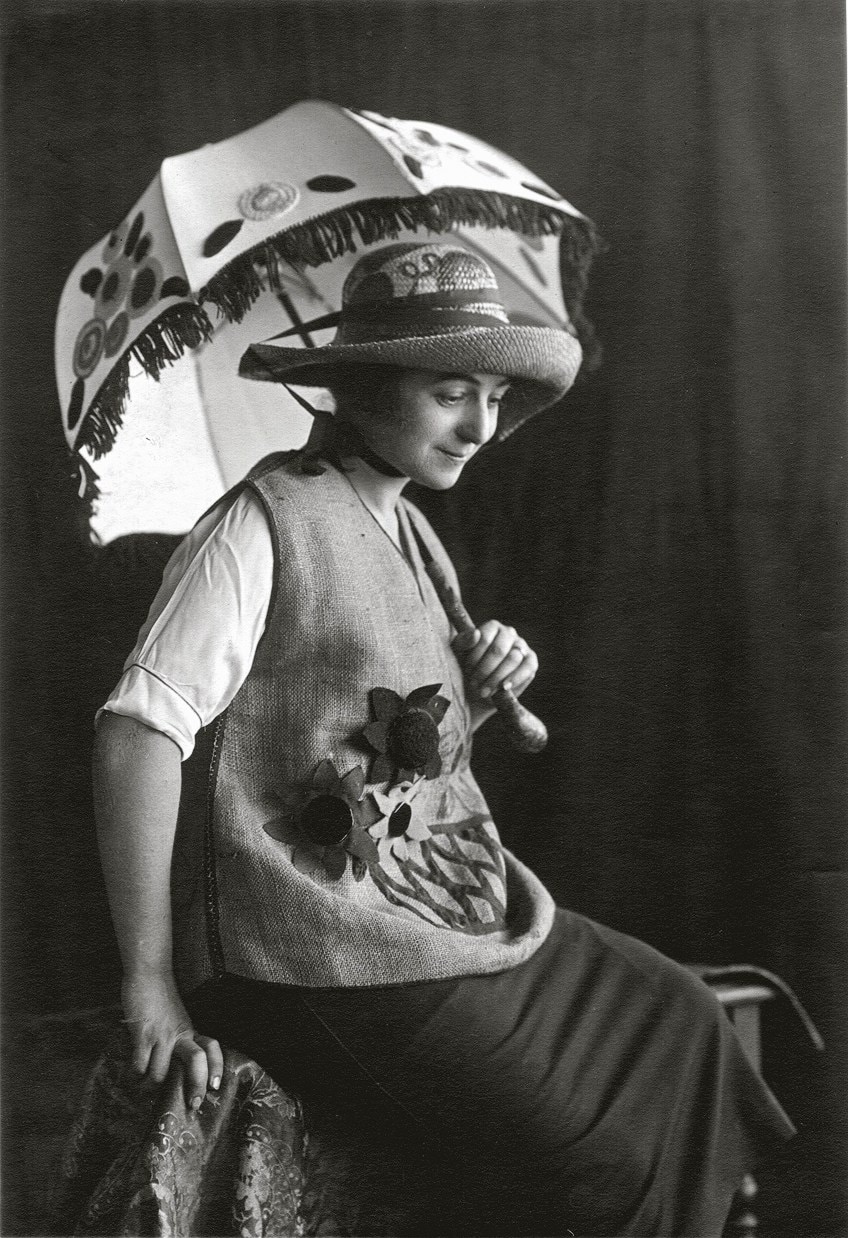
During the war, they stayed first in Portugal and then in Spain. Even though they tried to avoid the war, Robert Delaunay finally enlisted in 1916, only to be declared unfit, thanks to his large heart and weak lungs. By 1917, the couple’s finances were dwindling and Sonia, in an attempt to provide for the family, decided to open up her own fashion boutique, called Casa Sonia. By 1920, Sonia was an established fashion designer, and the Delaunays returned to Paris where they yet again hosted their Sunday salons.
Even though their life had seemingly returned to normal, Robert Delaunay had not exhibited for years, and his career was lagging behind his wife’s.

The Late Years
In the late 1920s, Robert Delaunay had attempted to make figurative work, but found no success in it and returned to abstraction. His passion however had seemed to dwindle, and by the mid-1930s, he had many unresolved works that lacked courage. Sonia, who was very successful in fashion design and now owned multiple boutiques, also missed the painting of her early life.
When the Wall Street crash crippled her business, she decided to close her boutique and they decided to return to live and paint as they did when they were younger.

In 1932, the couple was invited to take part in the Exposition Internationale des Arts et Techniques dans la Vie Moderne of 1937, with an emphasis on public art. Robert Delaunay took the lead in the project and recruited 50 unemployed artists to assist him in his vision of painting huge murals for the aeronautical pavilion.
The murals achieved great success but were overshadowed by Picasso’s “Guernica” , which was part of the same exhibition.

His success at the International Exposition was great enough that they asked the Delaunay couple back the following year. Here he would produce his last works, murals for the Sculpture Hall at Salon des Tuileries.
Soon after these successes, the Delaunay family fled to Montpellier in France in an attempt to escape the Nazi invasion of the Second World War.
Robert Delaunay’s health was however already deteriorating fast, and soon after the move, he passed away from cancer. Sonia and his son survived him, and Sonia paid tributes to him through her work. Sonia died in 1979.
Robert Delaunay Paintings
Delaunay’s paintings continued to develop throughout his life. Below is a list of four Robert Delaunay paintings that mark pivotal shifts in his career. The works start from his first, more figurative works and develop to the first works where his style became what we know him for today: complete abstraction in the Orphic style. These works will be analyzed in the subheadings to follow.
Saint-Séverin No. 3 (1909-1910)
- Red Eiffel Tower (La tour rouge) (1911-1912)
The Three Windows, the Tower and the Wheel (1912)
Simultaneous contrasts: sun and moon (1913, date on painting 1912).
This Robert Delaunay artwork depicts the Saint-Séverin gothic church in Paris. This church was the first subject of Robert Delaunay’s first series of paintings. The paintings captured the way in which light poured and fractured through the church’s stained-glass windows. The effect was slightly distorted compositions of the architecture of the church, which is seen to be the first traces of Cubism in Delaunay’s work.
The color palette of the work, which is slightly subdued, is an early influence of Paul Cézanne. Delaunay was attracted to windows and the fracture of light through them in many of his works.
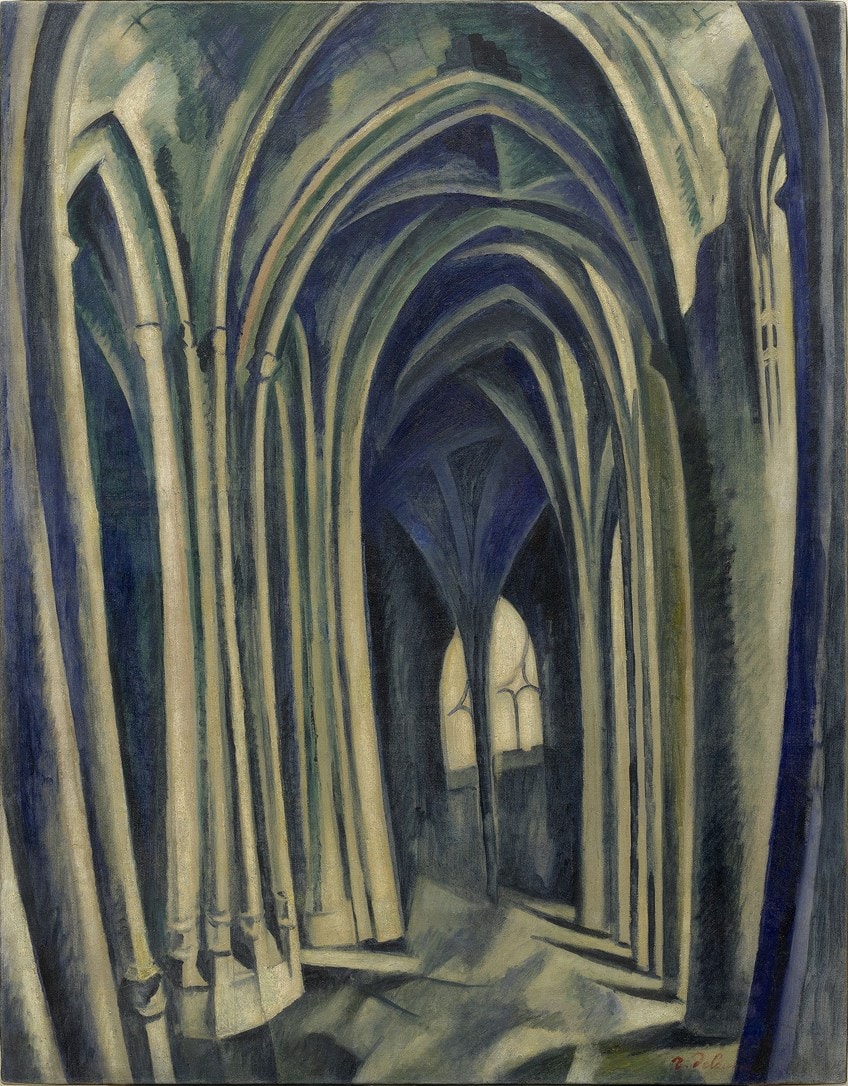
Red Eiffel Tower (La tour rouge) (1911 – 1912)
If Robert Delaunay’s paintings of the Saint-Séverin are the first traces of Cubism in his work, then his Red Eiffel Tower painting holds the first traces of going beyond the borders of Cubism. In this Robert Delaunay artwork, he painted the Eiffel tower from multiple perspectives, giving it a sense of movement, symbolic of the era of modernity and progress of Paris at the time.
Like the gothic cathedral , the Eiffel tower is also a French symbol of innovation and progress.
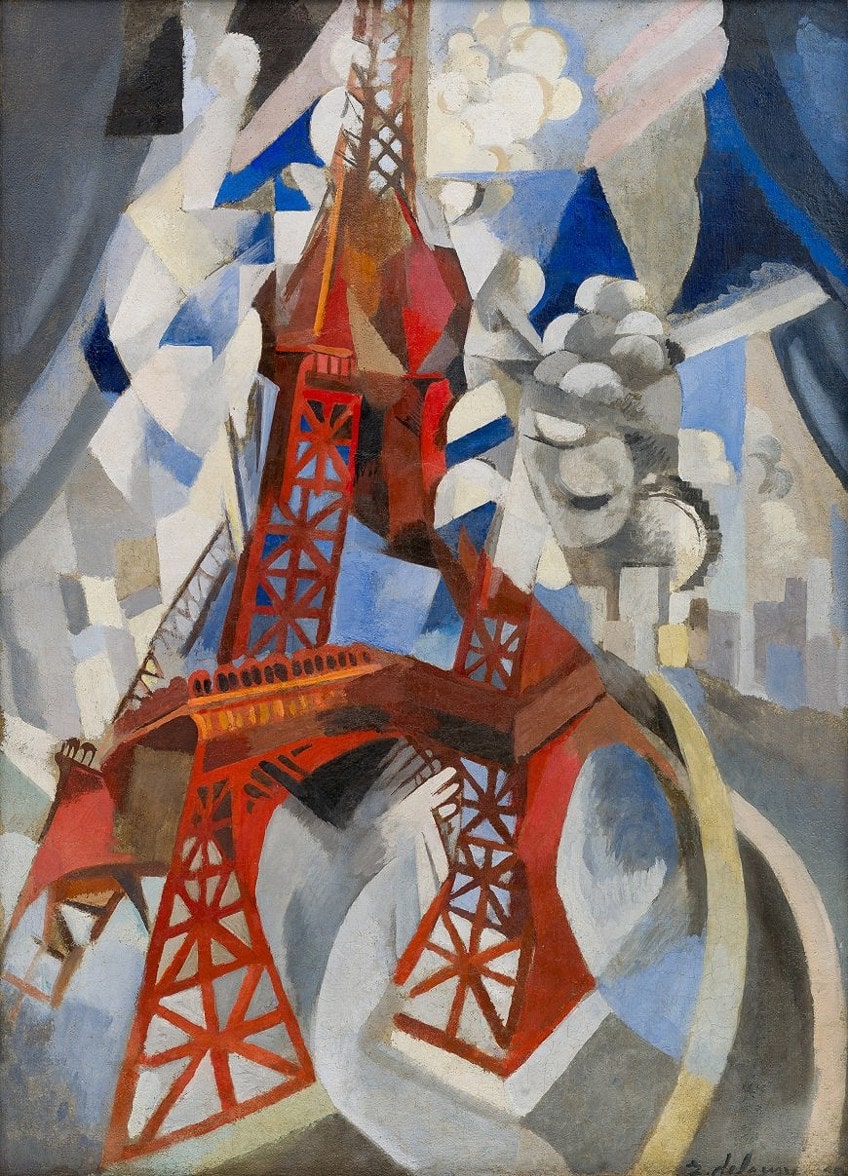
The Eiffel Tower was constructed when Delaunay was four years old, and he had a special relationship with it. The Eiffel Tower was a symbol of technological advancement, something that influenced the artist’s view of life greatly. It was also here, at the Eiffel Tower, that he and Sonia celebrated their engagement in 1909.
The Eiffel Tower was a popular topic for artists to paint at the time, and Delaunay created 14 paintings featuring the landmark.
Whilst Robert Delaunay’s paintings of the Eiffel Tower still had elements of representational art , his “Simultaneous Windows” series stretched this to its limit. This series of works are the last works where there are recognizable objects still visible, like the outline of the Eiffel Tower. Delaunay’s window series rejects the traditional function of a window, rather offering a kaleidoscope of colors and planes that invite a more imaginative view of the window.
These works have rhythm, structure, feeling, and harmony.

These words, according to Delaunay, were the start of his “constructive” phase. The fluid look of the colorful planes of the window gives the work a sense of movement. His attraction to windows comes from his early works, like the cathedral series, but now the glass planes became more than the fracturing of light, they became more symbolic of the transition between internal and external states of being.
This Robert Delaunay artwork is one of the first of his works that has completely moved into the abstract. By now, his work was purely focused on the experimentation of the tones and hues of colors and the effects of juxtaposing different colors next to each other. As always, Robert Delaunay’s artwork was interested here in the movement of things and the development of the world.
In fact, there was significant pressure on creators during this period to be the first at what they do, and therefore the painting is dated 1912, even though it was later discovered that the work was actually created a year later in 1913.
Simultaneous Contrasts: Sun and Moon, is a work that is inspired by the movement of the cosmos, the circular shape of the canvas refers to the universe. The work has a musical quality to it, relating to the musical Greek Orpheus after which “Orphism” is named.
The musical quality of the work is not by accident or coincidence.
In fact, the title of the work is derived from a book published in 1839 by Michel-Eugène Chevreul, titled On the Law of the Simultaneous Contrast of Colors . This book is a scientific analysis of color and Delaunay utilized this theory to create a work of music and harmony.
Book Recommendations
If you are interested in learning more about the work and life of Robert Delaunay, we recommend starting with these books:
Robert and Sonia Delaunay: The Triumph of Color (1994) by Hajo Düchting
This book, published by Taschen, celebrates the power of color as used by Robert and Sonia Delaunay. The book contains beautiful representations of both artists’ works and provides a good insight into their life and work.

- The works of Robert and Sonia Delaunay celebrate the power of color
- The couple's works express a creativity that goes beyond painting
- This book presents the work of both artists
Resisting Abstraction: Robert Delaunay and Vision in the Face of Modernism (2014) by Gordon Hughes
This hardcover book is the first English book published in over thirty years about Robert Delaunay as an artist. The book looks at the artistic vision of Delaunay and discusses his work as the first artist whose work was a response to the scientific theory of color and human vision.

- The first English-language study of Delaunay in more than 30 years
- Argues that Delaunay was the first to link abstraction to science
- Shows how Delaunay's works set him apart from his contemporaries
Robert Delaunay’s artworks are some of the most unique in the early 20th century in Europe. He was one of the first artists to truly break away from any form of representation. His works continued to influence countless artists such as Mark Rothko, and played a crucial part in the development of abstraction. Delaunay is considered the first artist to make work that responded to the scientific theories of color, distinguishing him from artists like Wassily Kandinsky, who used color for its spiritual and emotional qualities. If it wasn’t for Robert Delaunay and his wife Sonia Delaunay, who knows what course Abstract art would have developed into! It is thanks to this prolific couple in art history that we know of such a thing as Orphism.
Frequently Asked Questions
Who inspired robert delaunay.
Robert Delaunay was influenced by many different artists. Some of these include early cubist artists like Pablo Picasso and Paul Cézanne. He was also influenced by Georges Seurat’s use of Pointillism and color. He appreciated the experimental use of color by Impressionist and post-Impressionist artists like Claude Monet , Henri Rousseau, and Paul Gauguin.
What Was Robert Delaunay’s Final Work?
Delaunay’s final major work was murals that he created for the aeronautical pavilion of the Salon de Tuileries. The inspiration for these works came from airplane propellers. The bright colors and circular shapes gave a sense of movement similar to that of a propeller. His painting Rhythm no. 1 is one of these murals.
How Do You Pronounce Delaunay?
Many people are unsure how to pronounce Delaunay. The surname is French, and its phonetic spelling is duh-law-ne .
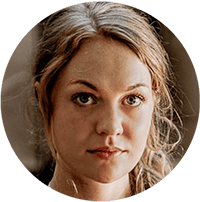
Chrisél Attewell (b. 1994) is a multidisciplinary artist from South Africa. Her work is research-driven and experimental. Inspired by current socio-ecological concerns, Attewell’s work explores the nuances in people’s connection to the Earth, to other species, and to each other. She works with various mediums, including installation, sculpture, photography, and painting, and prefers natural materials, such as hemp canvas, oil paint, glass, clay, and stone.
She received her BAFA (Fine Arts, Cum Laude) from the University of Pretoria in 2016 and is currently pursuing her MA in Visual Arts at the University of Johannesburg. Her work has been represented locally and internationally in numerous exhibitions, residencies, and art fairs. Attewell was selected as a Sasol New Signatures finalist (2016, 2017) and a Top 100 finalist for the ABSA L’Atelier (2018). Attewell was selected as a 2018 recipient of the Young Female Residency Award, founded by Benon Lutaaya.
Her work was showcased at the 2019 and 2022 Contemporary Istanbul with Berman Contemporary and her latest solo exhibition, titled Sociogenesis: Resilience under Fire, curated by Els van Mourik, was exhibited in 2020 at Berman Contemporary in Johannesburg. Attewell also exhibited at the main section of the 2022 Investec Cape Town Art Fair.
Learn more about Chrisél Attwell and the Art in Context Team .
Cite this Article
Chrisél, Attewell, “Robert Delaunay – The Painter Who Put Color Into Cubism.” Art in Context. March 18, 2022. URL: https://artincontext.org/robert-delaunay/
Attewell, C. (2022, 18 March). Robert Delaunay – The Painter Who Put Color Into Cubism. Art in Context. https://artincontext.org/robert-delaunay/
Attewell, Chrisél. “Robert Delaunay – The Painter Who Put Color Into Cubism.” Art in Context , March 18, 2022. https://artincontext.org/robert-delaunay/ .
Similar Posts

Van Gogh Art Style – A Look at His Artistic Expressions
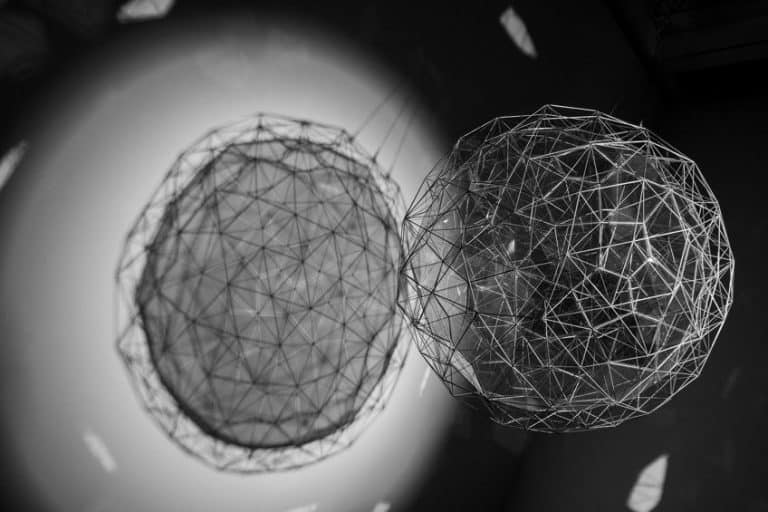
Reflections Artists – Harnessing the Creative Beauty of Light

Gustave Doré – French Artist Gustave Doré’s Biography and Works
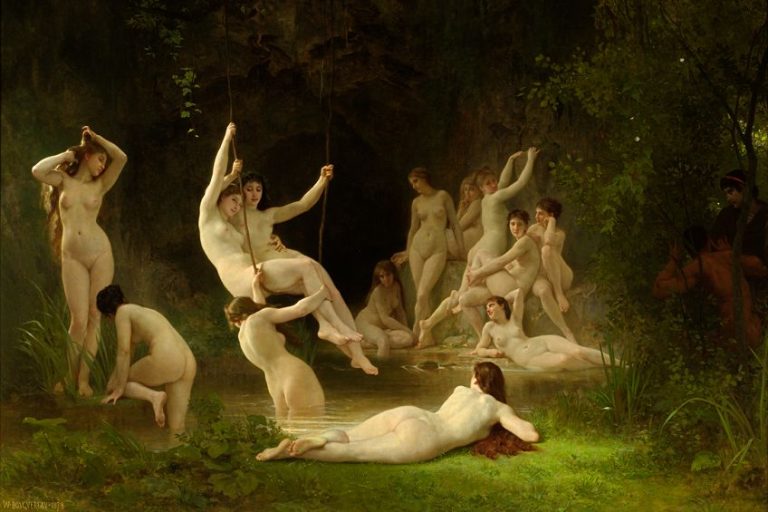
William-Adolphe Bouguereau – Famous Bouguereau Paintings
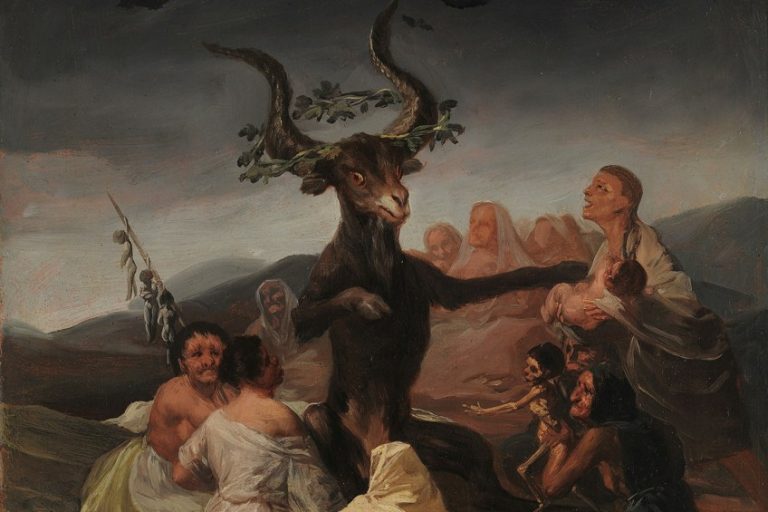
Francisco de Goya – Father of Unflinching Spanish Realism
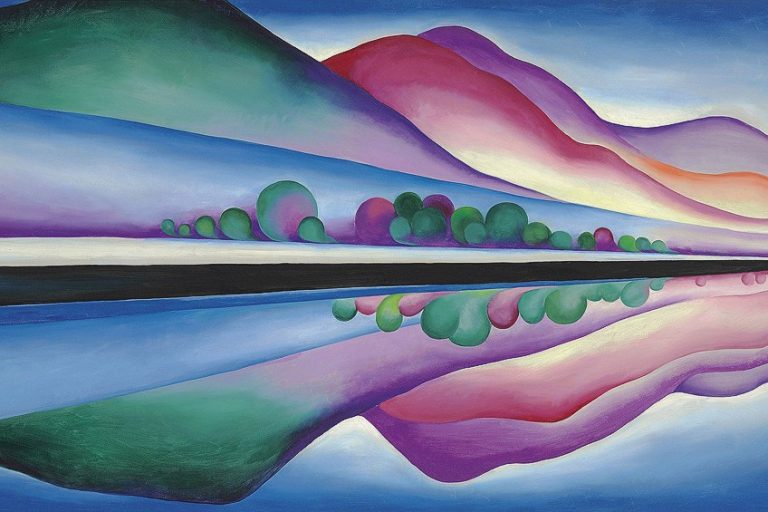
Famous American Painters – The Must-Known American Artists
Leave a reply cancel reply.
Your email address will not be published. Required fields are marked *
Save my name, email, and website in this browser for the next time I comment.
The Most Famous Artists and Artworks
Discover the most famous artists, paintings, sculptors…in all of history!

MOST FAMOUS ARTISTS AND ARTWORKS
Discover the most famous artists, paintings, sculptors!

Where next?
Explore related content
The Eiffel Tower
Robert delaunay 1909/1910, staatliche kunsthalle karlsruhe karlsruhe, germany.
Robert Delaunay (1885-1941) retained a muted palette of brown and grey hues in his painting of "The Eiffel Tower" (1909/10). In this colour scheme and his artistic contemplation of multiple viewpoints of objects, the influence of the analytic Cubism of Pablo Picasso (1881 - 1973) and Georges Braque (1882-1963) is visible. Delaunay's formal language resulted from the extension and acceleration of perception, the cognitive qualification of the real through multiple changes in perspective, which lead to a new unity in the image. The dizzying tower , buckled and fractured, yet majestically tall, takes up the entire height of the painting. Below, the steel construction straddles scenery-like rows of houses up to the vertical edges of the painting. Above, the tower thrusts through the cover of white-grey round cumulous clouds.
This work might seem like the anticipation of the demolition of this monument to modernity, and indeed, the removal of the Eiffel Tower was under discussion in 1909. However, Delaunay's painting is a dynamic agglomeration, meant to nobly embrace this symbol of the launch into a new technical era. Through the dynamic transformation of the painting's surface, especially through the use of colour, Delaunay arrived at his window paintings, which inspired French poet Guillaume Apollinaire to coin the term, "Orphism" for Delaunay's art. No longer working in a divisional mode like Severini, Delaunay became a singer of light, who concerned himself with the theoretical effects of socalled simultaneous contrasts. Practically, he transformed his motifs into a circling motion of glowing discs of colour, as in the small painting, "Crime of Passion (Political Drama)" (1914), which also belongs to the Kunsthalle collection.
- Title: The Eiffel Tower
- Creator: Robert Delaunay
- Creator Lifespan: 1885 - 1941
- Creator Nationality: French
- Date Created: 1909/1910
- Location Created: France
- Physical Dimensions: 116 x 81 cm
- Subject Keywords: Eiffel Tower , Tower , Paris , Seine, Gustave Eiffel, Engineer, Architecture , Urban, City, World's fair, Modernism, Avantgarde, Cityscape, Vedute, Cubism, Expressionism, Monument
- Type: Painting
- Publisher: Staatliche Kunsthalle Karlsruhe (State Art Gallery Karlsruhe)
- External Link: The Eiffel Tower
- Medium: Oil on canvas
- Art Genre: Vedute, Architecture
- Art Movement: Modern Art , Modern Era, Cubism
- Support: Canvas
- Depicted Location: Eiffel Tower, Paris, France
- Depicted Topic: Architecture, Cityscape
Get the app
Explore museums and play with Art Transfer, Pocket Galleries, Art Selfie, and more

- The Collection
- The American Wing Ancient Near Eastern Art Arms and Armor The Michael C. Rockefeller Wing Asian Art The Cloisters The Costume Institute Drawings and Prints Egyptian Art European Paintings European Sculpture and Decorative Arts Greek and Roman Art Islamic Art Robert Lehman Collection The Libraries Medieval Art Musical Instruments Photographs Antonio Ratti Textile Center Modern and Contemporary Art
Crop your artwork:
Scan your QR code:
Gratefully built with ACNLPatternTool
The Eiffel Tower
Robert Delaunay French
Not on view
Due to rights restrictions, this image cannot be enlarged, viewed at full screen, or downloaded.
Open Access
As part of the Met's Open Access policy , you can freely copy, modify and distribute this image, even for commercial purposes.
Public domain data for this object can also be accessed using the Met's Open Access API .
- https://www.metmuseum.org/art/collection/search/821901 https://www.metmuseum.org/art/collection/search/821901 Link copied to clipboard
- Animal Crossing
- Download image
- Enlarge image
Artwork Details
Use your arrow keys to navigate the tabs below, and your tab key to choose an item
Title: The Eiffel Tower
Artist: Robert Delaunay (French, Paris 1885–1941 Montpellier)
Medium: Lithograph
Dimensions: Sheet: 11 in. × 8 15/16 in. (28 × 22.7 cm)
Classification: Prints
Credit Line: The Elisha Whittelsey Collection, The Elisha Whittelsey Fund, 1975
Accession Number: 1975.606.6
Learn more about this artwork
Related artworks.
- All Related Artworks
- By Robert Delaunay
- Drawings and Prints
- Lithographs
- Planographic prints
- From A.D. 1900–present
La Place de l'Etoile
Saint-Severin
The runners.
Stage Design for Cleopatra
Study for "Portuguese Woman Pouring"

How Lithographs are Made
Resources for research.
The Met's Libraries and Research Centers provide unparalleled resources for research and welcome an international community of students and scholars.
The Met Collection API is where all makers, creators, researchers, and dreamers can connect to the most up-to-date data and public domain images for The Met collection. Open Access data and public domain images are available for unrestricted commercial and noncommercial use without permission or fee.
We continue to research and examine historical and cultural context for objects in The Met collection. If you have comments or questions about this object record, please complete and submit this form . The Museum looks forward to receiving your comments.

Drawings and Prints at The Met
Firebird Travel
RUSSIA TRAVEL HOME
Thank you for your enquiry.
RUSSIA TRAVEL PACKAGES A selection of Russian tours to take as they are or adjust to your needs.
THE GOLDEN RING Visit the heart of ancient Russia. What is the Golden Ring?
MOSCOW TOURS What you can see in Moscow.
MOSCOW DAY TRIPS Get out of Moscow and take a relaxing trip to some of these places
ST. PETERSBURG Some of the sights to see in Petersburg
LAKE BAIKAL TOURS Hiking and trekking around the world's deepest lake in the heart of Siberia
RUSSIAN DIGS Come and work in the field on a Russian Archaeological dig. Full training given on site.
TRAVEL TIPS & SERVICES Getting around in Russia
If you do not receive a confirmation email shortly then you have probably incorrectly entered your email.
Number of travelers ">
Special Interests or requests. "> ">
If you experience difficulties please use this link to send Regular Email . All information is treated as confidential
- Preplanned tours
- Daytrips out of Moscow
- Themed tours
- Customized tours
- St. Petersburg
Moscow Metro
The Moscow Metro Tour is included in most guided tours’ itineraries. Opened in 1935, under Stalin’s regime, the metro was not only meant to solve transport problems, but also was hailed as “a people’s palace”. Every station you will see during your Moscow metro tour looks like a palace room. There are bright paintings, mosaics, stained glass, bronze statues… Our Moscow metro tour includes the most impressive stations best architects and designers worked at - Ploshchad Revolutsii, Mayakovskaya, Komsomolskaya, Kievskaya, Novoslobodskaya and some others.
What is the kremlin in russia?
The guide will not only help you navigate the metro, but will also provide you with fascinating background tales for the images you see and a history of each station.
And there some stories to be told during the Moscow metro tour! The deepest station - Park Pobedy - is 84 metres under the ground with the world longest escalator of 140 meters. Parts of the so-called Metro-2, a secret strategic system of underground tunnels, was used for its construction.
During the Second World War the metro itself became a strategic asset: it was turned into the city's biggest bomb-shelter and one of the stations even became a library. 217 children were born here in 1941-1942! The metro is the most effective means of transport in the capital.
There are almost 200 stations 196 at the moment and trains run every 90 seconds! The guide of your Moscow metro tour can explain to you how to buy tickets and find your way if you plan to get around by yourself.
- EUR (€)
- GBP (£)
- Contact us

- Currency :
- US Dollar Euro Pound Sterling Russian Ruble Australian Dollar Canadian Dollar Swiss Franc Danish Krone Japanese Yen Norwegian Krone Swedish Krona
- Toll Free 0800 011 2023
- US and Canada United Kingdom Australia Brazil Netherlands Russia Sweden
- Tours by Region Moscow Saint Petersburg Golden Ring Lake Baikal Murmansk Siberia & Far East Sochi & Southern Russia Amsterdam Berlin Copenhagen Gdansk Georgia Helsinki Kaliningrad Kamchatka Karelia Kazan Klaipeda Nizhny Novgorod Northern Europe Oslo Perm Riga Ryazan Stockholm Tallinn Ulan-Ude Veliky Novgorod Vilnius Vladivostok Volgograd Yakutia Yekaterinburg
- Why Choose our Day Tours
- One Day Tours Two Days Tours Three Day Tours
- About Russian tours Private vs Group Tours
- Tours by Region Moscow & St.Peterburg Moscow Saint Petersburg Golden Ring Lake Baikal Trans-Siberian Siberia & Far East Altai Kaliningrad Kamchatka Karelia Kazan Perm Veliky Novgorod Yakutia Yekaterinburg
- Tour Types Small Group Tours Private Tour Theme Tour
- Moscow events St. Petersburg events Events archive
- Events by type Ballet Opera Concert Show All types
- Top theaters Bolshoi theatre - Historic Stage Bolshoi theatre - Small Stage Mariinsky Theater Mariinsky Theatre - Mariinsky II Mikhailovsky Theater
- Direction Moscow - St.Petersburg St. Petersburg - Moscow
- Ships MS Rostropovich MS Volga Dream MS Anton Chekhov MS General Lavrinenkov MS Georgy Chicherin MS Ivan Bunin MS Konstantin Fedin MS Konstantin Korotkov MS Kronshtadt MS Maxim Gorky MS Nikolay Chernyshevsky MS Nizhny Novgorod MS Rachmaninoff MS River Victoria MS Scenic Tsar MS Tikhy Don (MS Alexander Borodin) MS Vasiliy Kandinsky MS Zosima Shashkov Mustai Karim
- Russian Visa Invitation
- Moscow The Kremlin Red Square Golden Ring Tverskaya Street Grand Kremlin Palace (The Kremlin) Christ the Savior Novodevichiy Convent Moscow Subway The Bolshoi Theater Armoury Chamber (The Kremlin) St. Basil's Cathedral The Pushkin Museum of Fine Arts Yury Gagarin Cosmonauts training center
- Saint Petersburg Hermitage Museum Peterhof Catherine's Palace (Tsarskoe Selo) Pavlovsk St. Isaac Cathedral Peter and Paul Fortress Nevsky Prospect Yusupov Palace Savior on Blood Amber room Bronze Horseman (Senate square) Hermitage Theatre Kazansky Cathedral Kronstadt Palace Square Spit of the Vasilievsky Island
- 1/7th of the World Volga River Siberia Baikal Kazan Sochi Smolensk Nizhny Novgorod Kaliningrad Ulyanovsk Verkhoturova Island
- uVisitRussia Why travel with UVisitRussia Customers' Testimonials Contact details Cancellations & Changes
- Russian Travel News
- Russian travel advice Advices while packing Advices while travelling
Tour of famous Moscow Metro. Explore the Underground World! (2 hours)
- Add to wishlist
On this tour you take in some of Moscow's most important and highly decorated stations. Carrying up to 7 million passengers a day and covering almost the entire city, the Moscow Metro is one of the most extensive mass transit systems in the world. It's famous for the fine examples of social-realism which decorate many of its stations.
Visit some of the most important stations and get the chance to admire spectacular baroque-style ceilings, marble statues, busts of Communist heroes, stained glass windows, and ceiling mosaics depicting the bright Soviet future. Visit the most remarkable stations like Komsomolskaya, Kurskaya, Kievskaya and others, with the experienced guide who will bring you a full insight into their fascinating history.
- Tour of Moscow's Metro system visiting beautifully decorated key stations on the network.
- System that carries more than 7 million passengers per day
- Views of the most opulently designed tunnels & platforms
- Significance to the country—known as the “People's Palace”
- History & stories relayed by an expert local guide
If you wonder why the Moscow metro is considered one the most beautiful in the world, this tour is made for you!
Important info
Ask a travel expert.
- Professional English-speaking guide assistance. Other languages upon request (additional charge may apply)
- Hotel pick-up and drop-off
- Personal expenses
- Gratuities (optional)
- Food and drinks
- Confirmation will be received at time of booking
- Children must be accompanied by an adult
Departure and return point: nearest metro station to your central Moscow hotel
Departure time: flexible
Sights included in program
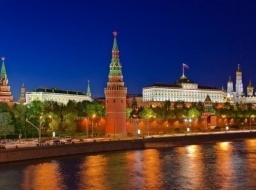
Thanks ! We will reply you in less than 24 hours (usually within 1-2 hours) .
Our flexible payment options allow you to pay 20% of a deposit first and the remaining 80% in 14 days prior to your tour date - payment can be done both online or over the phone. This gives you the peace of mind knowing your spaces are booked on the tours and that you do not miss out on making the most of your time in Russia.
Also you get the best, top-rated and most experienced and knowledgeable hand-picked tour guide appointed on a priority basis. In our experience, exceptional travel experiences are almost always delivered by exceptional people. With that in mind, we utilize a comprehensive approach to select and employ the best tour guides only. Multilingual and well travelled, each possesses deep insight into the diverse attractions and cultural patterns throughout the region. With us guides undergo a rigorous selection process, achieving outstanding knowledge of local culture and language. Rest assured that the best tour guides only will be working on the tours to give you excellent opportunity to explore the best of the sights during both short and long-term stay in Russia.
Once you complete your reservation, we will send you a booking confirmation email. As the day of the tour approaches, our logistics team will provide you with all relevant information for your tour.
Speak to an expert Call us now
+1 (888) 845-8877
- Shore excursions
- The Best of Two Capitals Private
- The Best of Two Capitals Small Group
- The Best of Two Capitals Gold
- Russia's Ancient Kingdoms
- Cradle of Russia
- Explore Moscow
- Explore St. Petersburg
- Read Customer Testimonials
- Advantages of Traveling with Us
US office 3422 Old Capitol Trail Suite 1252 , Wilmington DE, 19808 USA. US toll-free: 1-888-845-8877 Russian office Ligovsky pr. 57, Office 19, 191040, St. Petersburg, Russia
tel: +7-812-309-5339
© 2001 – 2024 by Northern Crown, Ltd. uVisitRussia and uVisitRussia.com are registered trademarks . Terms & Conditions Privacy Policy
Sign in with your social account

Sign in to our website using your Facebook or Google+ account.
Why Do You Need Our Travel Expert
Contact our experts, and they will help you to plan your best trip to Russia, with attention to every detail!
Our Experts have been in the travel industry for many years, guarantee to offer first class customer service, excellent value for money and unbiased advice. They are standing by to find and build your dream holiday to one of the world's most fascinating destinations - Russia. Your personal Travel Expert will guide you through each stage of the travel process, from choosing a program that fits you best to support during your trip.
Just tell us your e-mail, and we'll take care of everything!
Leave your phone number
Your tour request has been received. Thank you ! We have sent you the confirmation message to [email]
Please make sure that you receive this message (sometimes e-mail messages may go to the spam/junk mail). If you did not get this message, it means you will not get message with the tours' selection as well. If you use a Yahoo!, Gmail, AOL or Hotmail, we recommend to add [email protected] to your address book.
We recommend to leave your phone number. If we will not heard back that you received the e-mail with the tours' selection, we will contact you by phone. And you will not miss the best tour for you.
Thank you ! Your request for Travel Expert assistance has been sent. We will e-mail you within 1 hour.
Sorry, some changes needed
There was a problem with your request.
Claudia Looi
Touring the Top 10 Moscow Metro Stations
By Claudia Looi 2 Comments

Komsomolskaya metro station looks like a museum. It has vaulted ceilings and baroque decor.
Hidden underground, in the heart of Moscow, are historical and architectural treasures of Russia. These are Soviet-era creations – the metro stations of Moscow.
Our guide Maria introduced these elaborate metro stations as “the palaces for the people.” Built between 1937 and 1955, each station holds its own history and stories. Stalin had the idea of building beautiful underground spaces that the masses could enjoy. They would look like museums, art centers, concert halls, palaces and churches. Each would have a different theme. None would be alike.
The two-hour private tour was with a former Intourist tour guide named Maria. Maria lived in Moscow all her life and through the communist era of 60s to 90s. She has been a tour guide for more than 30 years. Being in her 60s, she moved rather quickly for her age. We traveled and crammed with Maria and other Muscovites on the metro to visit 10 different metro stations.

Arrow showing the direction of metro line 1 and 2

Moscow subways are very clean
To Maria, every street, metro and building told a story. I couldn’t keep up with her stories. I don’t remember most of what she said because I was just thrilled being in Moscow. Added to that, she spilled out so many Russian words and names, which to one who can’t read Cyrillic, sounded so foreign and could be easily forgotten.
The metro tour was the first part of our all day tour of Moscow with Maria. Here are the stations we visited:
1. Komsomolskaya Metro Station is the most beautiful of them all. Painted yellow and decorated with chandeliers, gold leaves and semi precious stones, the station looks like a stately museum. And possibly decorated like a palace. I saw Komsomolskaya first, before the rest of the stations upon arrival in Moscow by train from St. Petersburg.
2. Revolution Square Metro Station (Ploshchad Revolyutsii) has marble arches and 72 bronze sculptures designed by Alexey Dushkin. The marble arches are flanked by the bronze sculptures. If you look closely you will see passersby touching the bronze dog's nose. Legend has it that good luck comes to those who touch the dog's nose.

Touch the dog's nose for good luck. At the Revolution Square station

Revolution Square Metro Station
3. Arbatskaya Metro Station served as a shelter during the Soviet-era. It is one of the largest and the deepest metro stations in Moscow.

Arbatskaya Metro Station
4. Biblioteka Imeni Lenina Metro Station was built in 1935 and named after the Russian State Library. It is located near the library and has a big mosaic portrait of Lenin and yellow ceramic tiles on the track walls.

Lenin's portrait at the Biblioteka Imeni Lenina Metro Station

5. Kievskaya Metro Station was one of the first to be completed in Moscow. Named after the capital city of Ukraine by Kiev-born, Nikita Khruschev, Stalin's successor.

Kievskaya Metro Station
6. Novoslobodskaya Metro Station was built in 1952. It has 32 stained glass murals with brass borders.

Novoslobodskaya metro station
7. Kurskaya Metro Station was one of the first few to be built in Moscow in 1938. It has ceiling panels and artwork showing Soviet leadership, Soviet lifestyle and political power. It has a dome with patriotic slogans decorated with red stars representing the Soviet's World War II Hall of Fame. Kurskaya Metro Station is a must-visit station in Moscow.

Ceiling panel and artworks at Kurskaya Metro Station

8. Mayakovskaya Metro Station built in 1938. It was named after Russian poet Vladmir Mayakovsky. This is one of the most beautiful metro stations in the world with 34 mosaics painted by Alexander Deyneka.

Mayakovskaya station

One of the over 30 ceiling mosaics in Mayakovskaya metro station
9. Belorusskaya Metro Station is named after the people of Belarus. In the picture below, there are statues of 3 members of the Partisan Resistance in Belarus during World War II. The statues were sculpted by Sergei Orlov, S. Rabinovich and I. Slonim.

10. Teatralnaya Metro Station (Theatre Metro Station) is located near the Bolshoi Theatre.

Teatralnaya Metro Station decorated with porcelain figures .

Taking the metro's escalator at the end of the tour with Maria the tour guide.
Have you visited the Moscow Metro? Leave your comment below.
January 15, 2017 at 8:17 am
An excellent read! Thanks for much for sharing the Russian metro system with us. We're heading to Moscow in April and exploring the metro stations were on our list and after reading your post, I'm even more excited to go visit them. Thanks again 🙂
December 6, 2017 at 10:45 pm
Hi, do you remember which tour company you contacted for this tour?
Leave a Reply Cancel reply
You must be logged in to post a comment.
Please go to the Instagram Feed settings page to create a feed.

COMMENTS
Champs de Mars: The Red Tower (French: Champs de Mars: La Tour Rouge) is an oil on canvas painting by the French painter Robert Delaunay, from 1911. It shows an orphic representation of the Eiffel Tower, in Paris. The painting is held in the Art Institute of Chicago.
Robert Delaunay peint Tour Eiffel rouge en 1911. L'œuvre est conservée au Art Institute de Chicago, États-Unis(en) [2]. Robert Delaunay a peint plusieurs tableaux sur la Tour Eiffel. Tour Eiffel, 1926-1928, crayon Conté sur papier, 62,3 × 47,5 ...
1911/23. Robert Delaunay. French, 1885-1941. Robert Delaunay was four years old when the Eiffel Tower was erected in Paris in the public green space known as the Champ de Mars. One of many artists to depict the landmark, Delaunay did a series of Eiffel Tower paintings, of which the Art Institute's example is among the best known.
The Eiffel Tower series of Robert Delaunay (1885-1941) is a cycle of paintings and drawings of the Eiffel Tower. Its main sequence was created between 1909 and 1912, with additional works added up to 1928. ... La Tour Rouge: Solomon R. Guggenheim Museum: 1911-12 Les trois Grâces (étude pour "La Ville de Paris") Private collection 1912 La ...
Address. 1071 Fifth Avenue New York, NY 10128. (Between 88th and 89th Streets) Get directions.
Red Eiffel Tower (La tour rouge) Delaunay painted his first Eiffel Tower in 1909 to celebrate his engagement to Sonia Terk. He went on to produce around fifteen versions and the tower became a major motif for artists in recognition of the major role that technological development and innovation had on the first part of the 20 th century. The ...
La Tour Eiffel. [1926] An emblem of modernity, the metal tower built by Gustave Eiffel in 1889 fascinated Delaunay and runs through all his work. After breaking it down in a major Cubist series in the early 191Os, the artist glorifies the Eiffel Tower in a range of flamboyant colours underscored by a powerful seen-from-below effect, often ...
La Tour Eiffel (The Eiffel Tower) With his depiction of the Eiffel Tower, the symbol of Paris built in 1889 as a spectacular example of French engineering, Robert Delaunay produced a shocking scenario of the decline and fall of the modern world. His admiration for industrial progress contrasts with his pictorial destruction of the architectural ...
Robert Delaunay. Tour Eiffel. 1918. Vincent Huidobro. ... Robert Delaunay has 49 works online. There are 10,290 illustrated books online. Licensing. If you would like to reproduce an image of a work of art in MoMA's collection, or an image of a MoMA publication or archival material ...
Robert Delaunay was four years old when the Eiffel Tower was erected in Paris in the public green space known as the Champ de Mars. One of many artists to depict the landmark, Delaunay did a series of Eiffel Tower paintings, of which the Art Institute's example is among the best known. The artist infused the dynamism of modern life into this image by employing multiple viewpoints, rhythmic ...
La Tour. (. The Eiffel Tower. ) 1925. The artist and theorist Robert Delaunay used the term "simultaneous contrast" in 1912 to describe the sensations of depth, motion, and harmony he achieved through color effects and a Cubist fragmentation of space. The poet Guillaume Apollinaire referred to the musicality implied in Delaunay's style when he ...
With his depiction of the Eiffel Tower, the symbol of Paris built in 1889 as a spectacular example of French engineering, Robert Delaunay produced a shocki...
The painting pictured at the top of the page is known as La Tour Rouge, or Red Eiffel Tower and dates to 1911-12. It is a part of the Guggenheim Museum, who own a number of Robert Delaunay's paintings. This would be one of the last of his first phase of Eiffel Tower paintings, before returning to the topic in 1922.
The Eiffel Tower takes on new meaning but remains the timeless classic we all still love and adore. Robert Delaunay, Champs de Mars: The Red Tower, 1911-1923, Art Institute of Chicago, Chicago, IL, USA. When Robert Delaunay began painting Champs de Mars: The Red Tower in 1911, the Eiffel Tower was only 22 years old. Therefore, it was still ...
Emblème de la modernité, la tour métallique construite par Gustave Eiffel en 1889 fascine Delaunay et traverse tout son œuvre. Après l'avoir désarticulée dans une importante série cubiste au début des années 1910, l'artiste magnifie la tour Eiffel dans une gamme de couleurs flamboyantes soulignée par un puissant effet de contre-plongée, souvent adopté par les photographes de l ...
Red Eiffel Tower (La tour rouge) (1911 - 1912) by Robert Delaunay; Robert Delaunay, Public domain, ... Whilst Robert Delaunay's paintings of the Eiffel Tower still had elements of representational art, his "Simultaneous Windows" series stretched this to its limit. This series of works are the last works where there are recognizable ...
From Guggenheim Museum Bilbao, Robert Delaunay, La tour rouge (1911-1912), Oil on canvas, 125 × 90.3 cm
Robert Delaunay (1885-1941) retained a muted palette of brown and grey hues in his painting of "The Eiffel Tower" (1909/10). In this colour scheme and his artistic contemplation of multiple viewpoints of objects, the influence of the analytic Cubism of Pablo Picasso (1881 - 1973) and Georges Braque (1882-1963) is visible. Delaunay's formal language resulted from the extension and acceleration ...
The Eiffel Tower. Robert Delaunay French. 1926 Not on view View more. Due to rights restrictions, this image cannot be enlarged, viewed at full screen, or downloaded. ... Robert Delaunay (French, Paris 1885-1941 Montpellier) ca. 1915-16. How Lithographs are Made
RUSSIA TRAVEL PACKAGES A selection of Russian tours to take as they are or adjust to your needs. THE GOLDEN RING Visit the heart of ancient Russia.
The Moscow Metro Tour is included in most guided tours' itineraries. Opened in 1935, under Stalin's regime, the metro was not only meant to solve transport problems, but also was hailed as "a people's palace". Every station you will see during your Moscow metro tour looks like a palace room. There are bright paintings, mosaics ...
Toll Free 0800 011 2023 ... Day tours. Tours by Region
The two-hour private tour was with a former Intourist tour guide named Maria. Maria lived in Moscow all her life and through the communist era of 60s to 90s. She has been a tour guide for more than 30 years. Being in her 60s, she moved rather quickly for her age. We traveled and crammed with Maria and other Muscovites on the metro to visit 10 ...